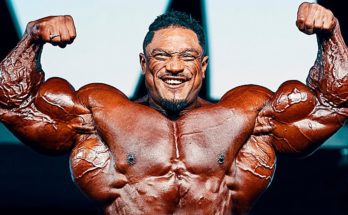
Cycling is a tremendously popular and exciting sport. People get involved in cycling at many ages in order to find a way to exercise, challenge themselves, and have fun. Many people live sedentary lives or work at a desk all day. Often, people entering the world of cycling have pre-existing conditions and muscle imbalances that might worsen from cycling. Regardless of if you are a competitive cyclist or just a hobbyist, by approaching cycling with a strategy you can combat dysfunction and prevent cycling from exacerbating injuries and muscle pain! Even if you are free of muscle imbalances and dysfunctional patterns, cycling performance can be maximized with a similar individualized approach. Let’s go over how to train as a cyclist!
We can apply the Hobbyists guide to longevity to create our programming strategy! Let’s take a look at the best way to approach training as a cyclist! While it’s not imperative to memorize all of the muscles involved and their functions, it can be helpful to visualize and understand what could be involved. You can still learn to program and gain insight into existing injuries or pain syndromes you are having!
Step 1: Learn the muscles being used in your activity.
Step 2: Determine if any weakness or imbalances currently exist.
Step 3: Figure out what Corrective Exercises to implement.
Step 4: Construct a program using corrective exercise additives.
Step 5: Reassess regularly. Maintain.
Step 1: Learn the muscles being used in your activity.
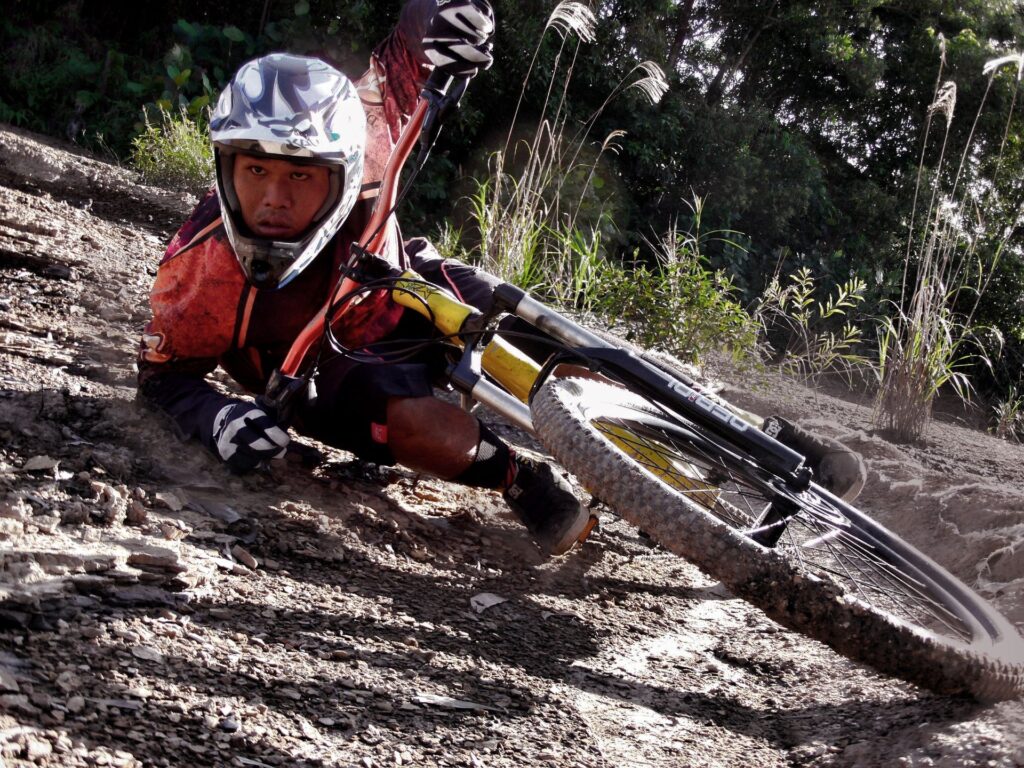
Although cycling is exercise, the position of your body is very similar to being seated at a desk. Often, the same issues that plague desk-sitters also affect bikers. Whenever we are in a position of stress our bodies will adapt and reinforce this. There are many muscles that become overdeveloped when cycling. When this happens, joint function is altered, and that can create pain-related syndromes and nagging injuries. When looking at how to train as a cyclist, it can be beneficial to learn which muscles might be overdeveloped.
Head and neck:
Sternocleidomastoid:
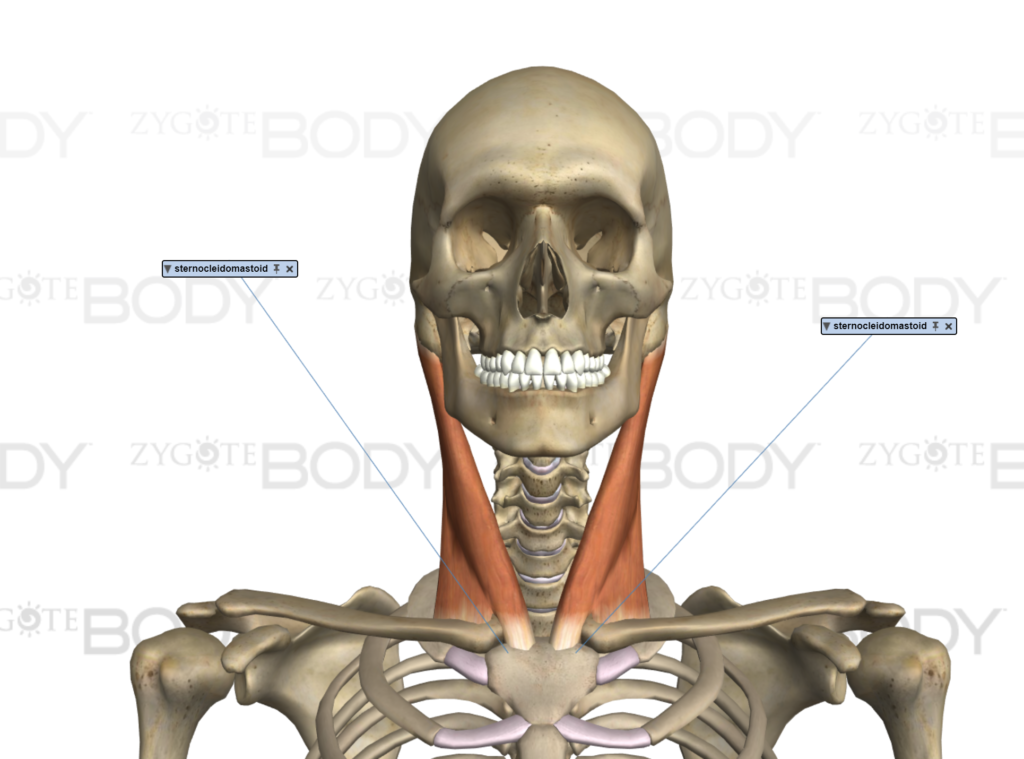
A major player in Cervical health, these muscles tend to overdevelop in positions of stress that have the head shifting forward. Sitting at a desk, craning over a cell phone, and hunched over a bike will all contribute towards the overactivity of these muscles. The main function of these muscles is to rotate your head and stabilize it in place.
Anterior Scalenes:
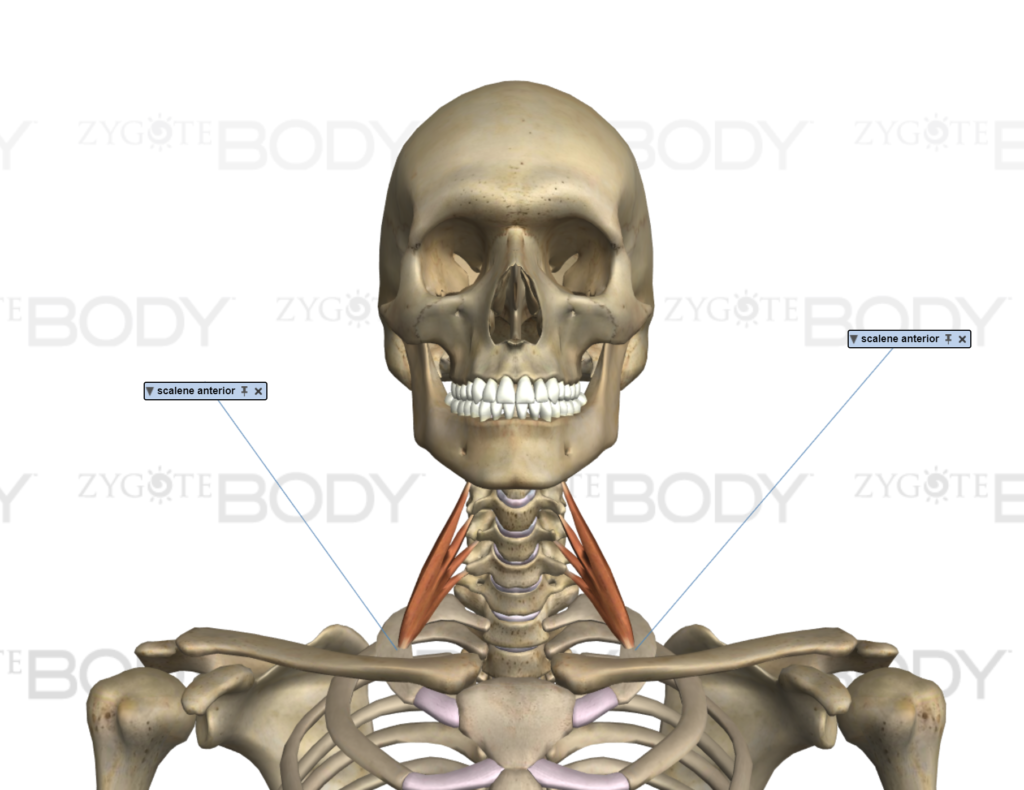
These muscles synergize with the sternocleidomastoid and stabilize the head. They tend to overdevelop from all the same sources as the other head and neck muscle imbalances: desk posture, cell phone usage, etc. Much of cycling has you hunched forward with your head up, exacerbating muscle imbalances in the neck and shoulders.

Shoulders and arms:
Front delts:
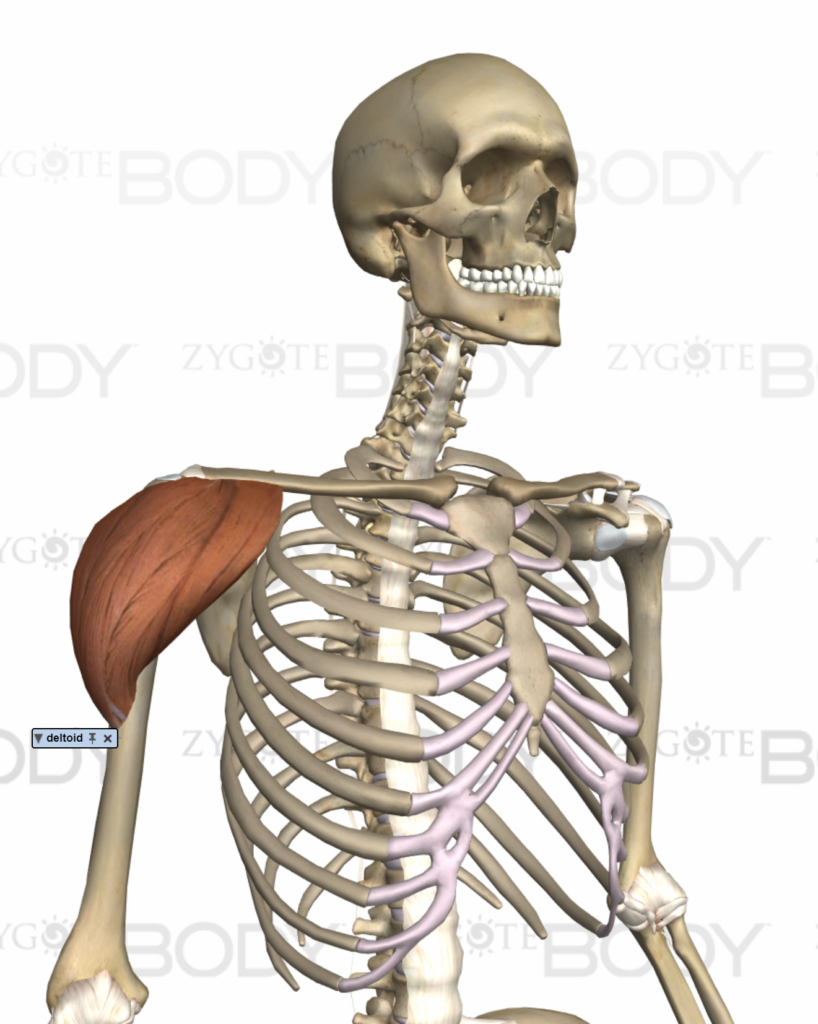
Well, you can’t let go of the handles! Your front delts synergize with your traps to elevate your shoulder girdle. Your delts hold your arms up in front of you. Many forms of biking, especially mountain biking are rigorous on these muscle groups to remain in control through tough chunky sections.
Trapezius:
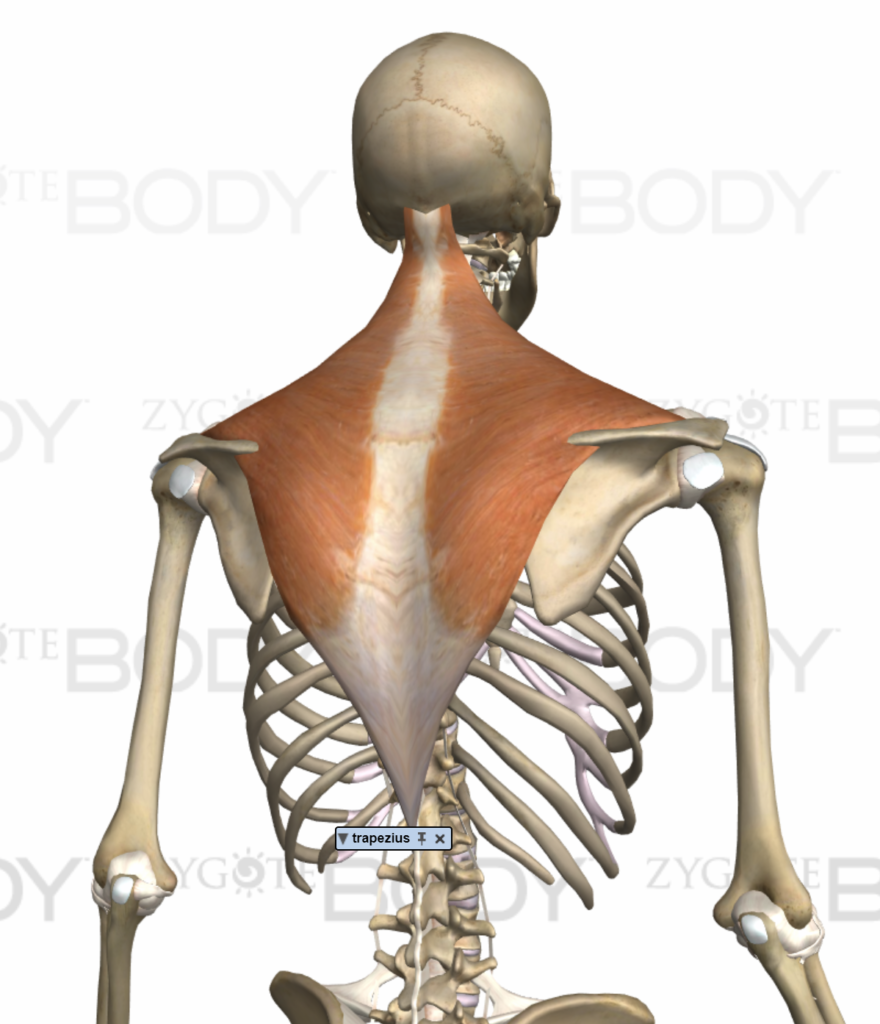
The traps work with the front delts and elevate the shoulder girdle. Many different positions on the bike will still require a forward lean, elevating the shoulder girdle and eliciting this muscle. Overdeveloped traps and front delts lead to many muscle imbalances of the upper body.
Brachioradialis:

Usually, we ride with a slight bend at the elbows. The brachioradialis and brachialis synergize to help stabilize and control the handlebars and therefore are a vital muscle group for cyclists. Imbalances in the brachioradialis and brachialis can alter the balance of muscles surrounding your elbow.
Brachialis:
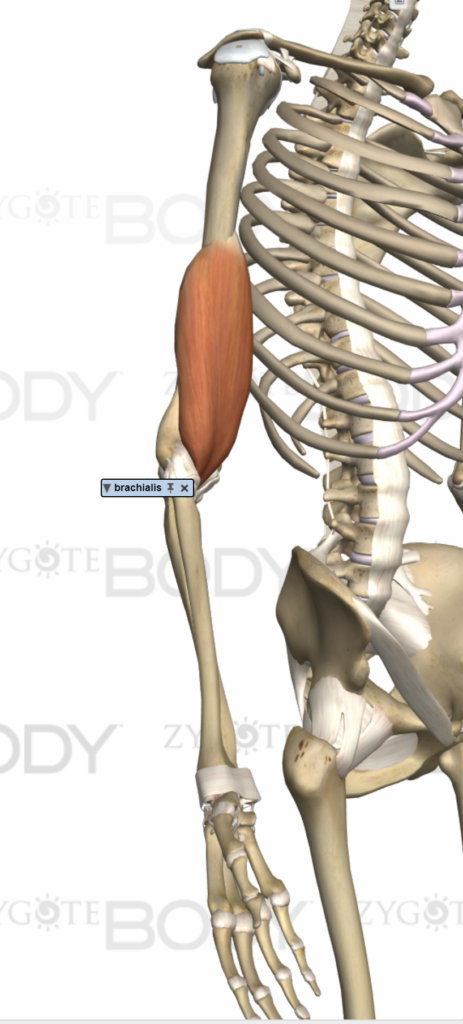
In a neutral or pronated grip, the brachialis works with the brachioradialis to perform elbow flexion. This muscle is used to control and steer your bike. Overdeveloping this group of muscles can lead to various syndromes such as tennis elbow, aka lateral epicondylitis, aka tendonitis!
Triceps:
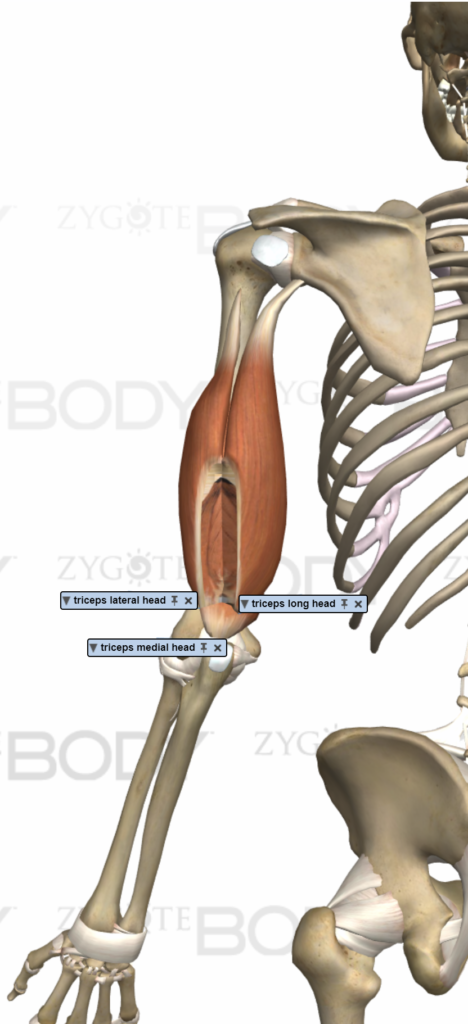
Although often not considered, the triceps will control elbow extension, often the triceps are providing the feedback against our handlebars, controlling our body position, assisting in absorbing impacts over chunky terrain and descents. Overdeveloping these muscles can contribute to dysfunction at the elbow.
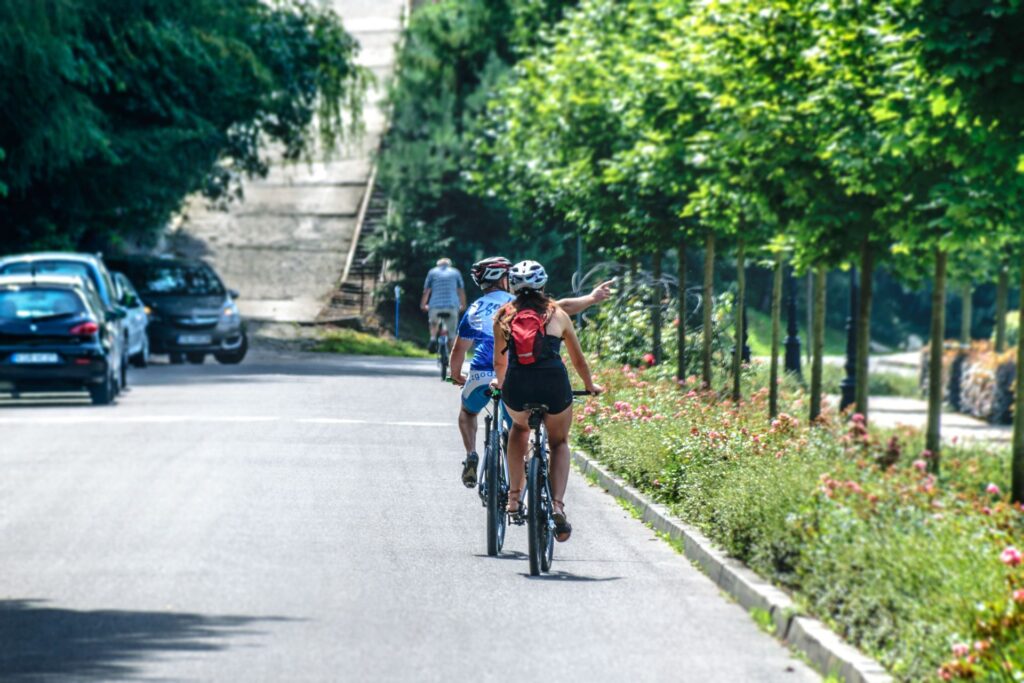
Chest:
Pec Major:
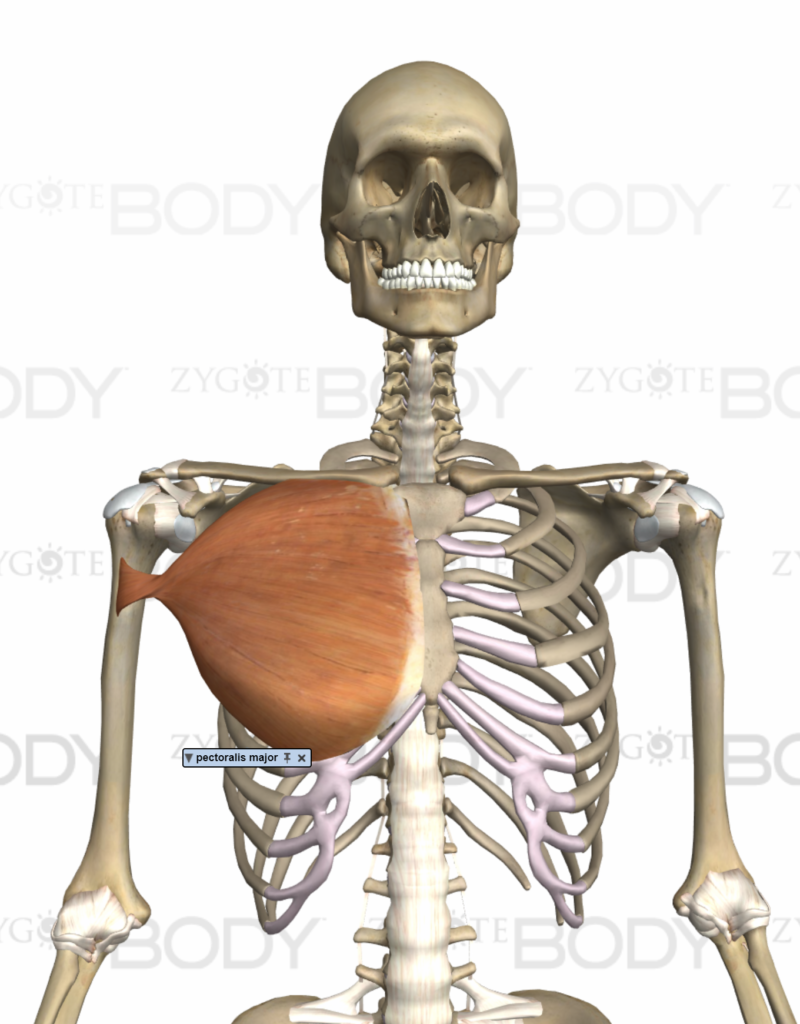
The pecs tend to get overdeveloped from stabilizing the handlebars and pushing against the bike for support and control. Along with the pec minor, these muscles tend to develop overactivity and dysfunction from the slouched positions we are in while working at a desk, and can be exacerbated by cycling.
Pec Minor:
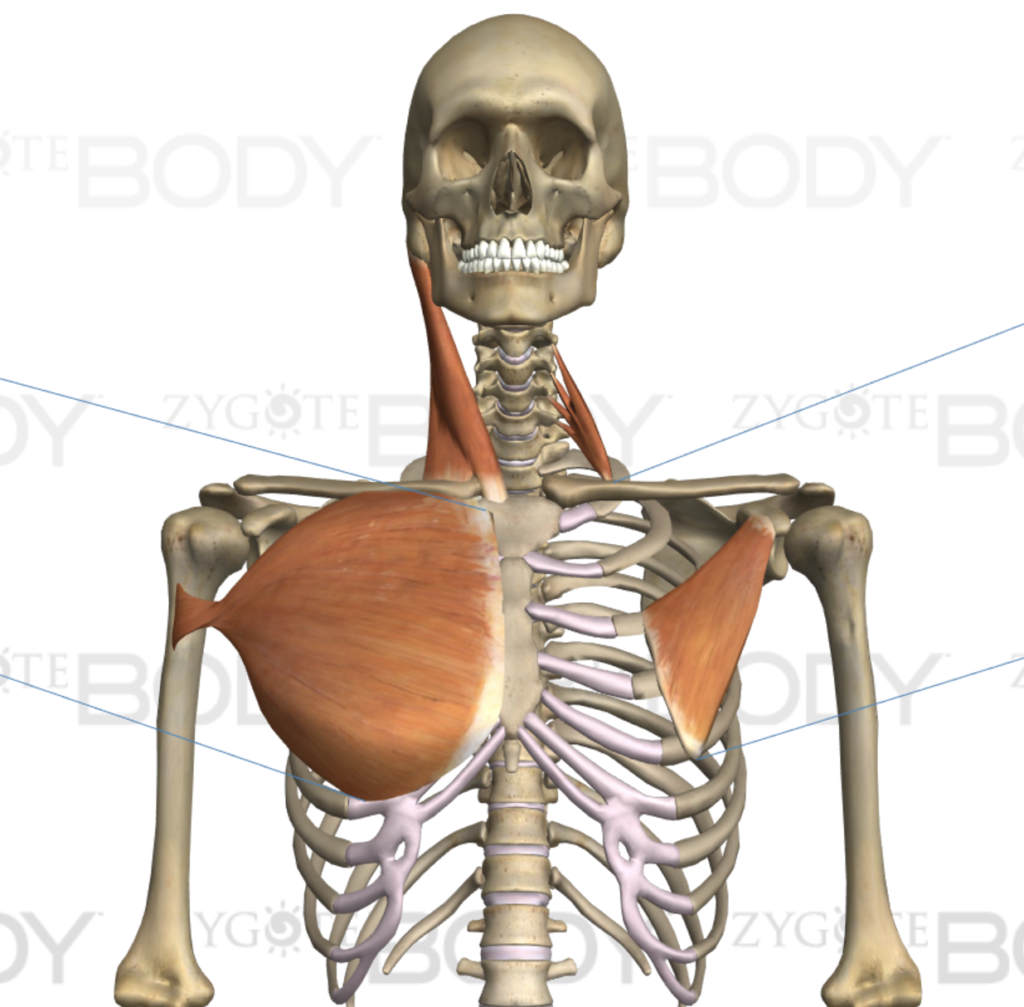
This small muscle contributes to the shoulder rolling forward when leaning over. Desk posture really leads to overactivity in these muscles, as does biking. When this muscle becomes imbalanced it can wreak havoc on upper back posture and dysfunctions.
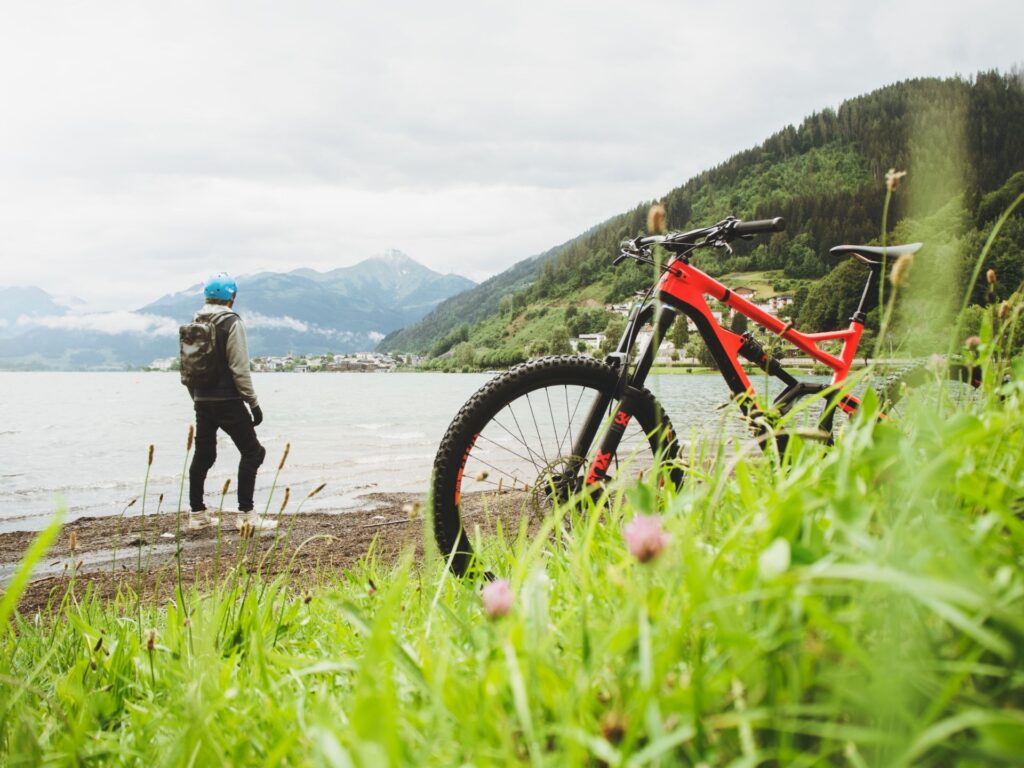
Hips and core:
Hip flexor complex:
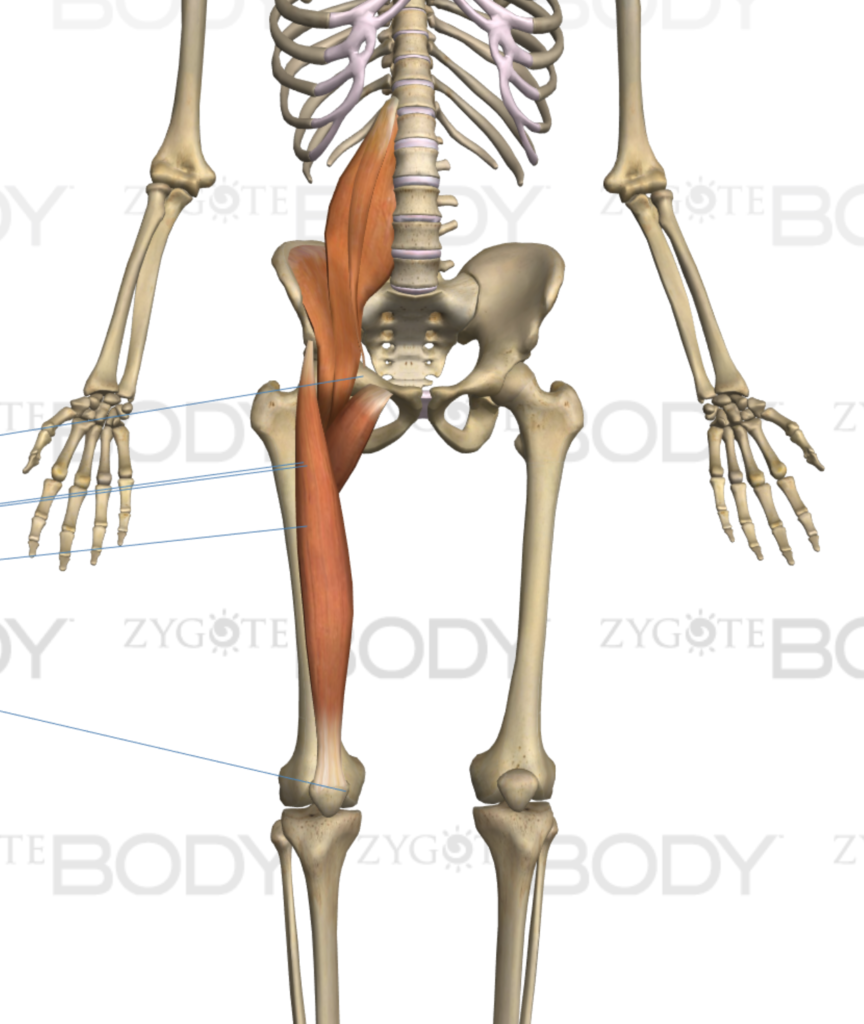
A major player in the upstroke, the hip flexors are constantly in a shortened position while sitting on the bike. The hip flexors are tremendously important when determining pelvis position and overdeveloping the hip flexors is a sure way to create muscle imbalances and low back problems. Overactive hips tend to lead to underactive weakened glutes, which are essential for a healthy posture and spine. Often people spend long amounts of time sitting at work and in a desk, which also leads to overactive hip flexors and biking can exacerbate this problem. Addressing imbalance at the hips is absolutely necessary!
Rectus abdominis:
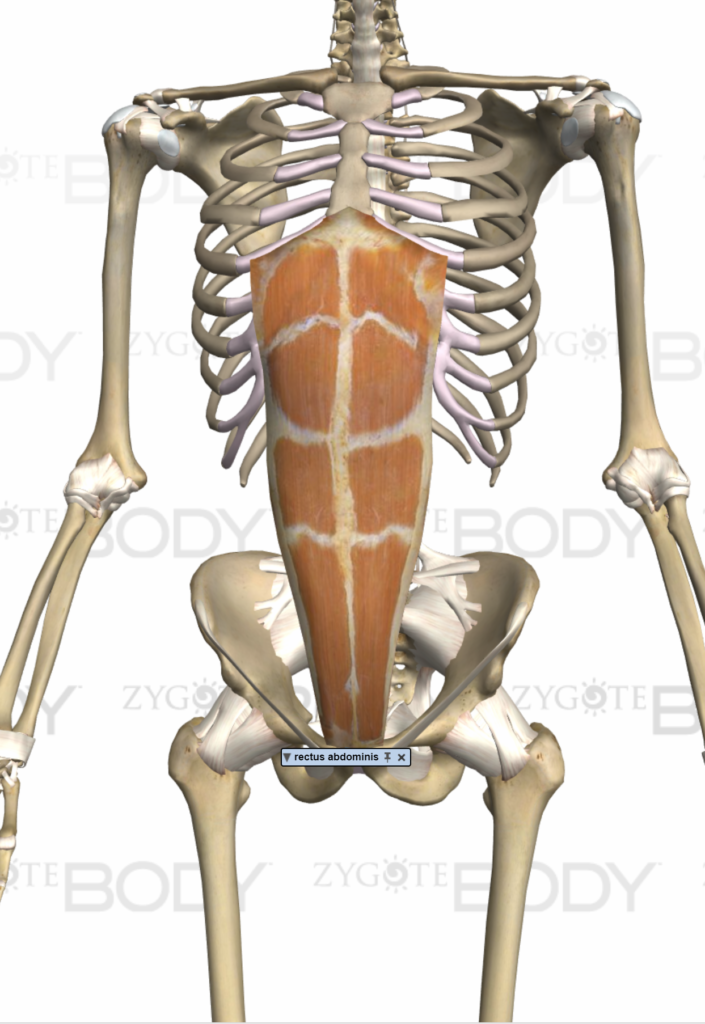
This is your 6 pack muscle. This muscle tends to develop dysfunction when we are slouched over in seated positions. Constantly in a shortened position, the rectus abdominis will unbalance the lower back leading to pain and weakness in the lumbar spine!
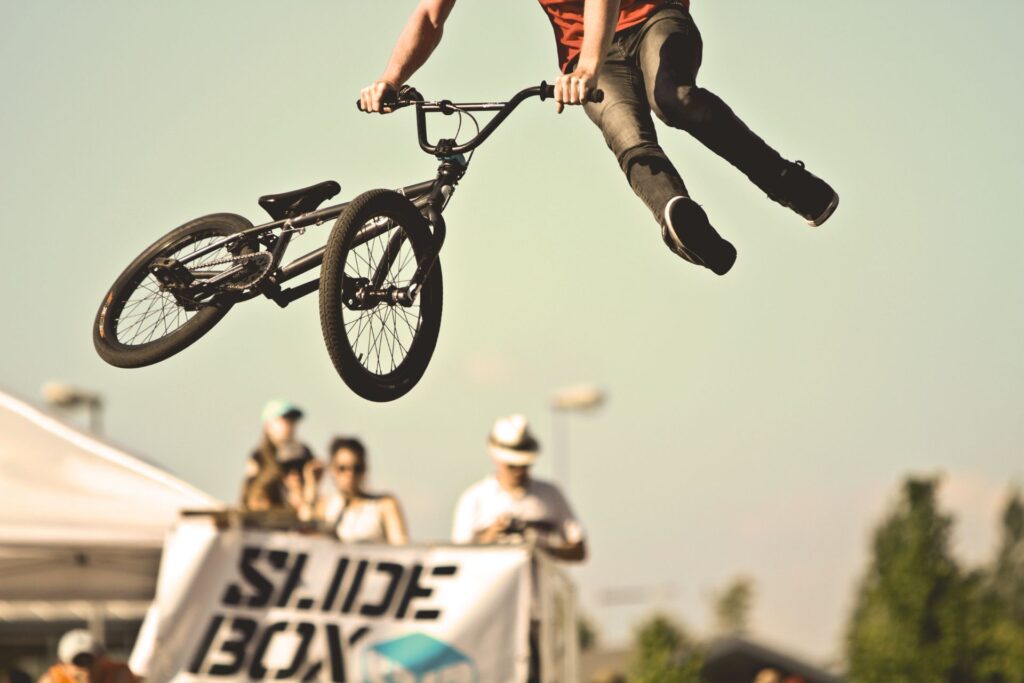
Legs:
Quads:

I’m sure just about anyone who has ridden a bike has felt the burn in their quads. The muscles of the thighs play a very important part in your cycling and therefore easily become overdeveloped along with the hip flexors, which can lead to lower back problems!
Adductors:
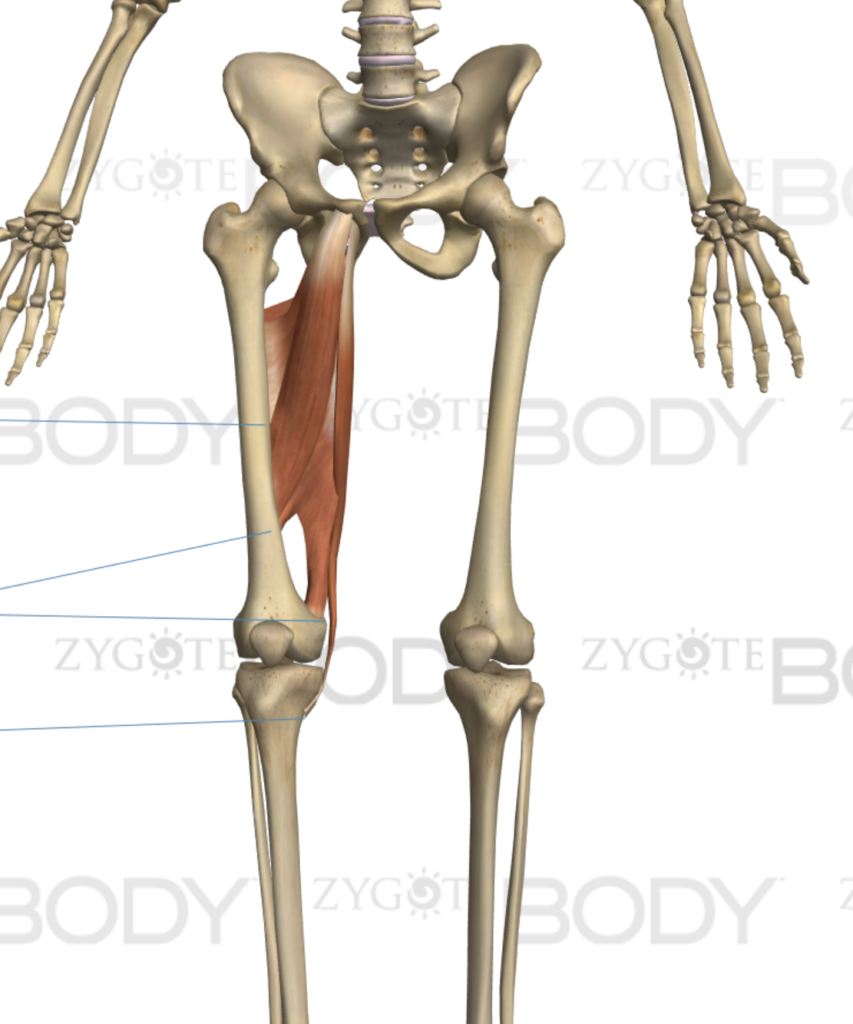
These muscles provide a lot of stability on your bike and tend to steer and direct your balance while riding. These muscles easily develop overactivity with other leg muscles and contribute to muscle imbalances surrounding the hips.
Hamstrings:
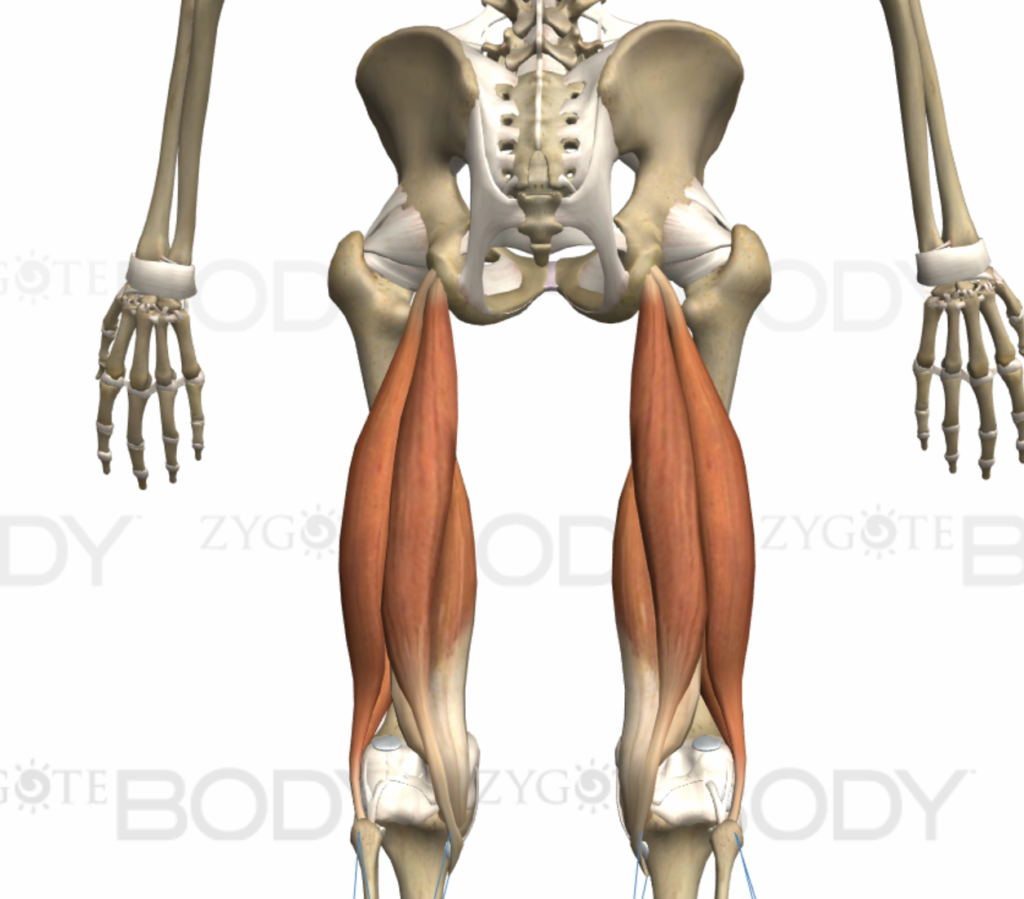
Hamstrings play an important role in your pedal stroke, a well-balanced pedal stroke has hamstring involvement throughout the whole thing. Regardless, the hamstrings tend to get overdeveloped easily in cyclists. The hamstrings tend to take over the function of the glutes and can throw the hips out of whack!
Calves:
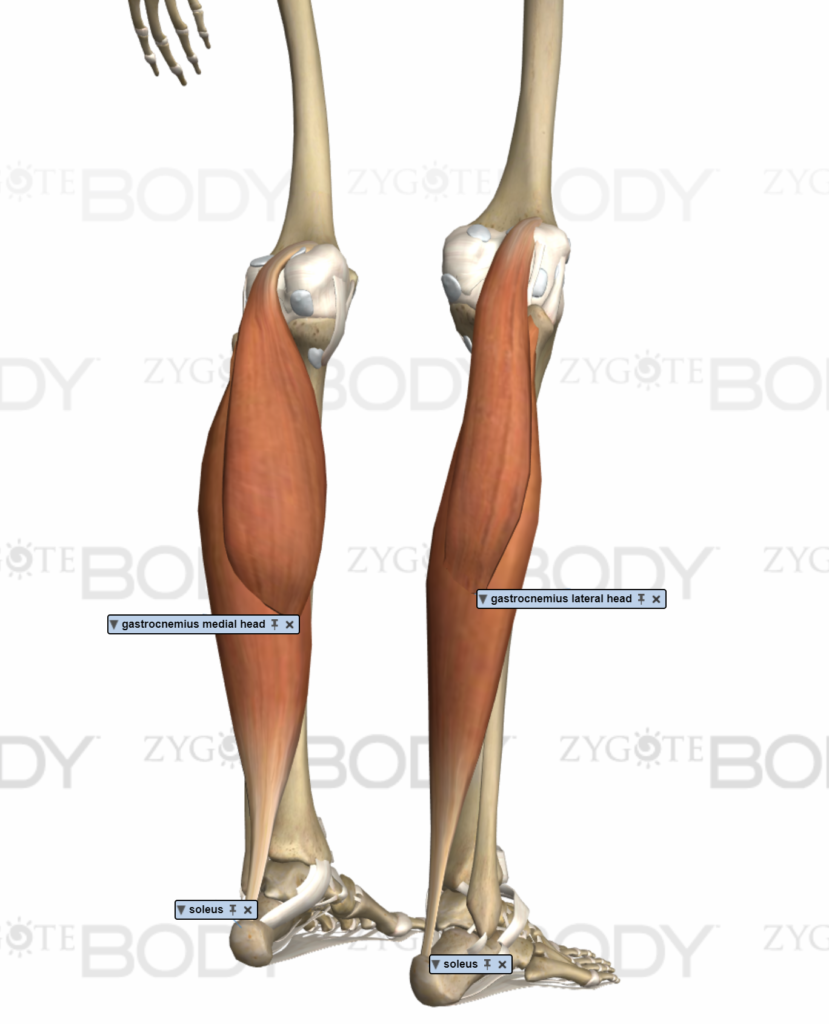
A big part of the down-stroke, the calves play a role in translating power through your pedaling. Standing up out of the saddle during rocky descents and pushing through steep smooth climbs will tend to yield a major calf burn! The calves and ankles are often an area of dysfunction for cyclists!
Step 2: Determine if any weakness or imbalances currently exist.
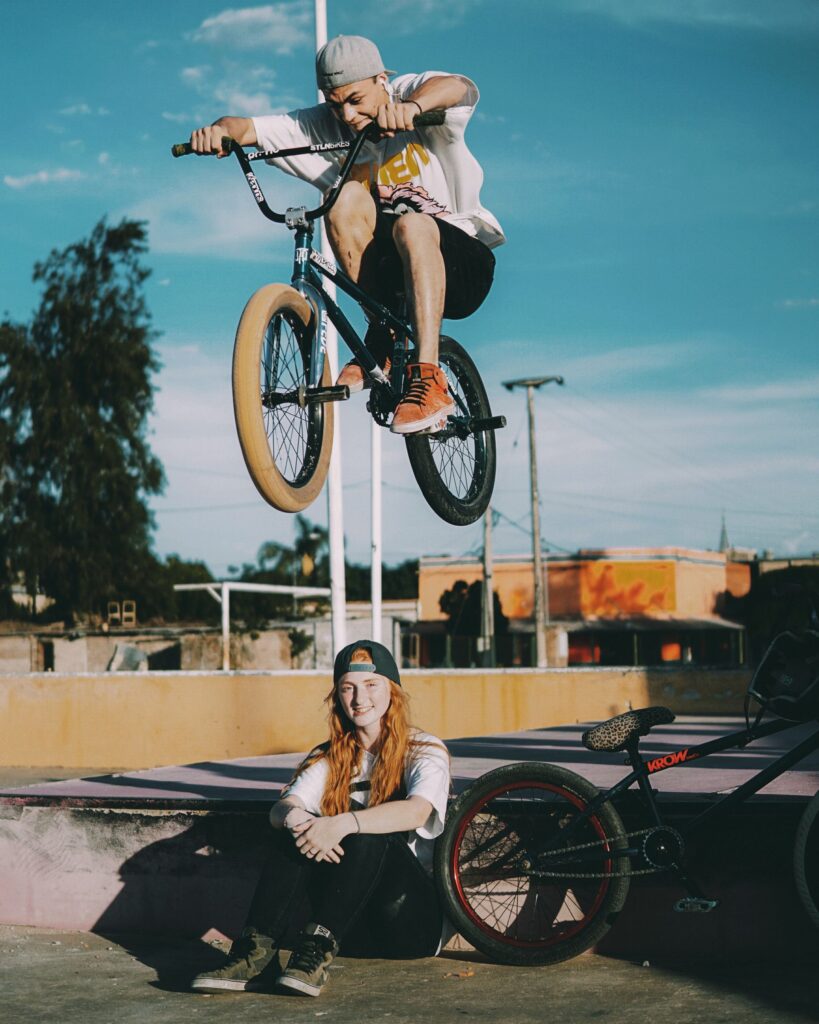
Like those who work at a desk all day, many of the same muscle imbalances and dysfunctions develop in cyclists. Although biking is a great form of exercise, if you sit at a desk for hours a day and then go bike for another hour or two you’re only contributing towards issues. Herniated discs in the neck and lower back are common. Low back pain and shoulder pain are tremendously common. Glutes and postural muscles tend to weaken and all of the muscles that hunch you forward tend to overdevelop. A weak core will impact breathing and respiratory function!
Muscle imbalances will directly impede performance and quality of life. By addressing muscle imbalances all aspects of strength, recovery, and endurance will improve.
When learning how to train as a cyclist, we identify which muscles could be neglected from biking. Then we can begin to understand them and figure out what to do next, and how to compliment biking with proper exercise.
Let’s take a look at the muscles that might be imbalanced in cyclists and learn what they do so we can choose the proper corrective exercises:
Head and neck:
Deep cervical flexors:
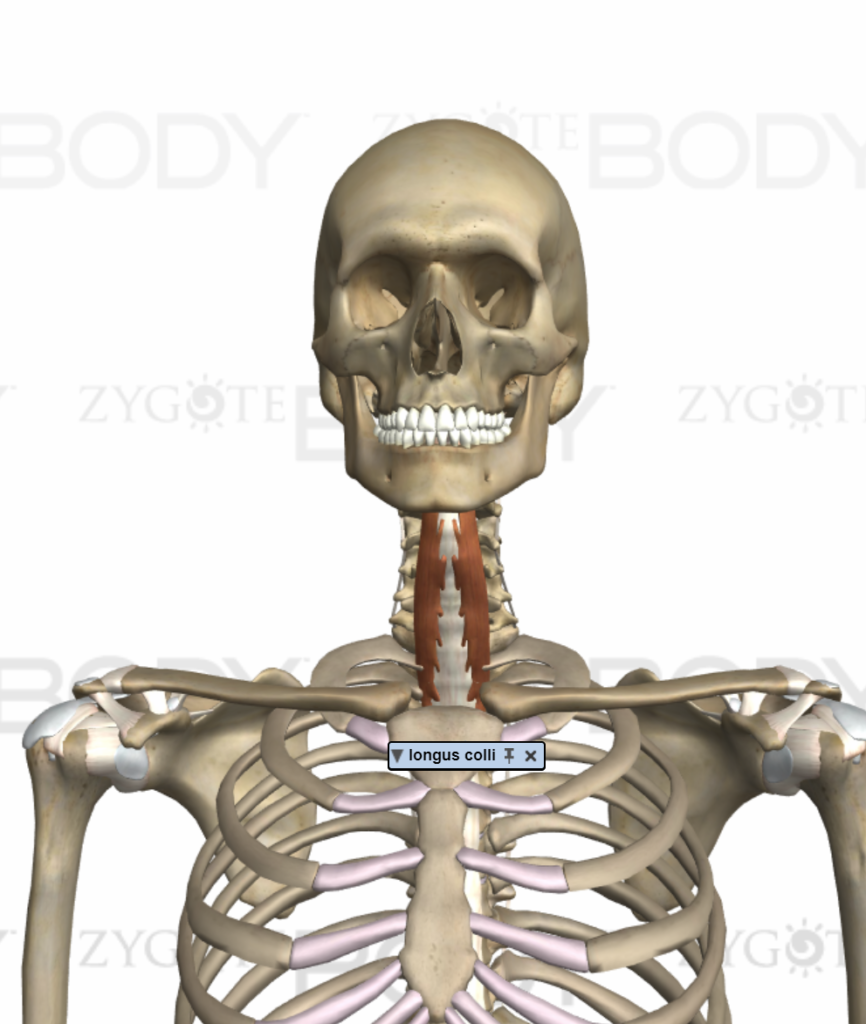
These muscles are postural and help pull the chin back and head up. They reverse the slouched position often developed from biking and other poor habits like cell phone usage and sitting at a desk all day. Chin tucks are a great way to strengthen and activate these muscles.
Cervical extensors:
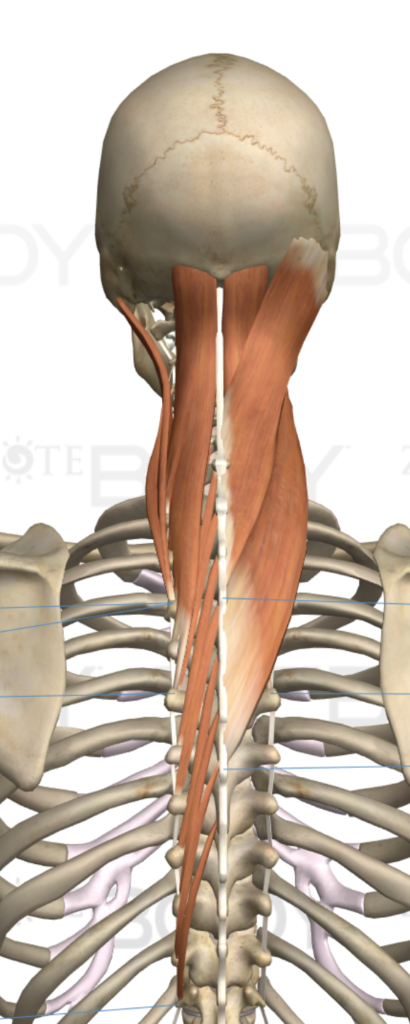
These muscles synergize with the deep cervical flexors. They elevate your head and straighten your neck. The cervical extensors become weak and inhibited from many common habits ie. cell phone usage and desk posture. Many of the same exercises for the deep cervical flexors will engage these muscles as well.

Shoulders and arms:
Rear delts:
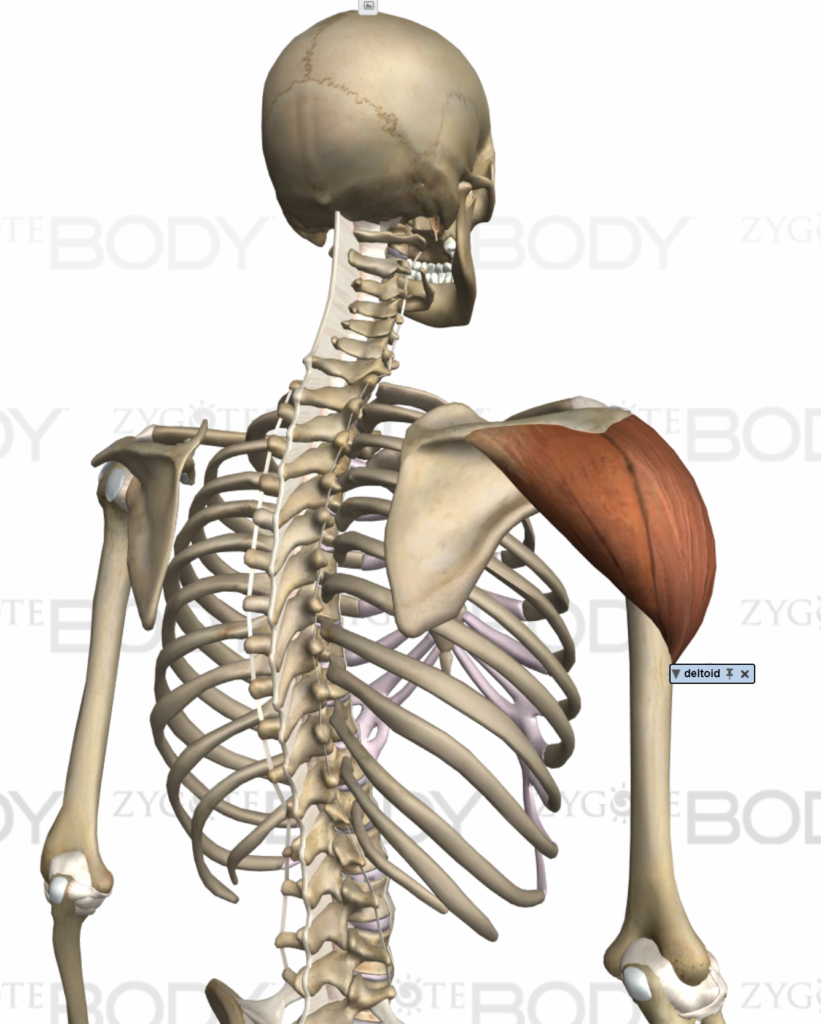
These muscles tend to become inhibited as the front delts become overdeveloped and overactive from stabilizing the bike. The rear delts and rotator cuff muscles tend to be neglected in biking, and for overall shoulder health and longevity, it’s important to address these muscle groups.
Rotator cuff muscles:
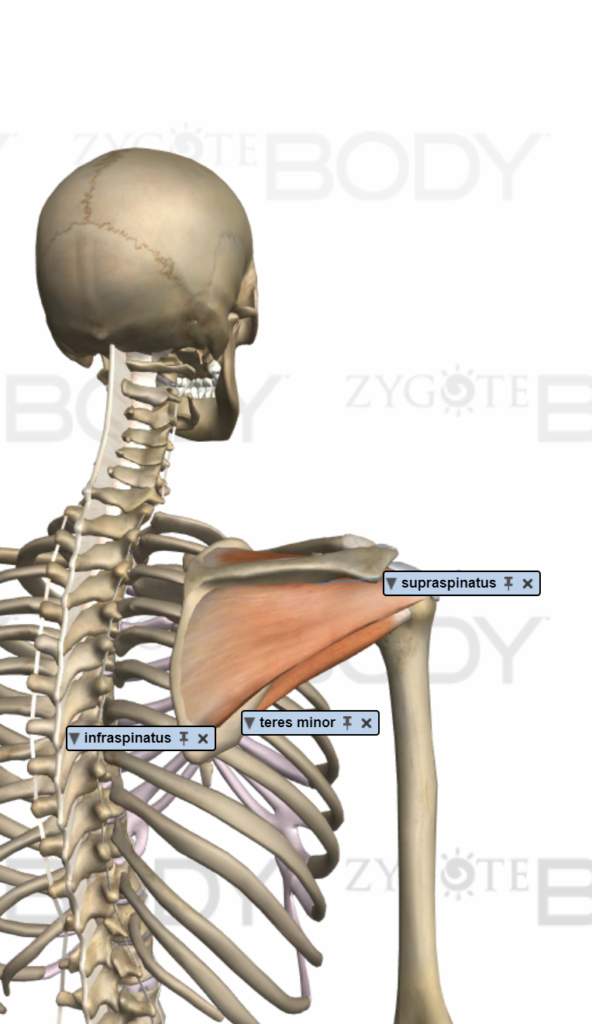
The rotator cuff is a key group of muscles that stabilize your shoulders and are generally neglected. Training the rotator cuff muscles is a good idea for overall shoulder balance, longevity, and health. Because your arms are extended in biking, and the front delts and pec minor tend to become overdeveloped and these antagonist muscles could very likely be weak and inhibited.
Biceps:

The biceps supinate your wrists, turning your palms up. Your hands are NEVER supinated while gripping handlebars, on a road bike you might be in a neutral position occasionally when in TT position, and on a MTB you are ALWAYS pronated. It’s a good idea to train the biceps for a well-balanced elbow free of muscle imbalances.

Back:
Thoracic extenders:
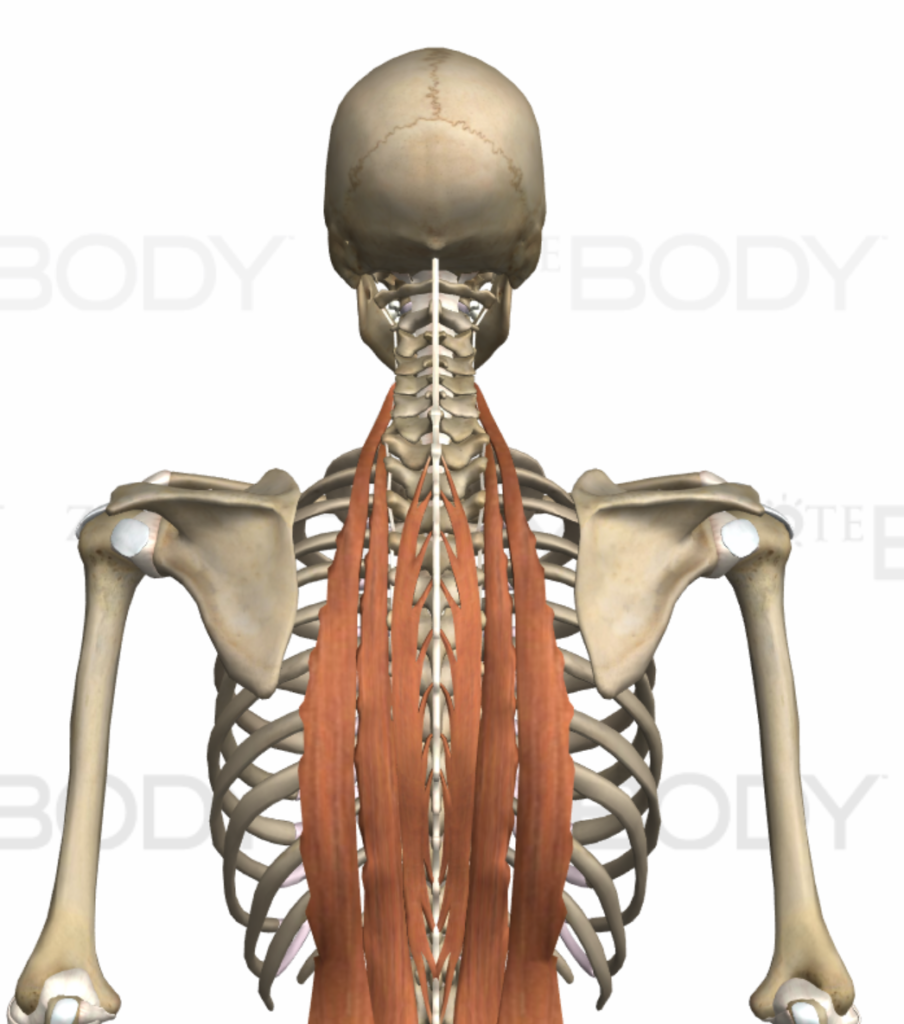
These are your main postural muscles of your upper back. These muscles keep you upright and are essential for a healthy spine and a pain-free back. These muscles are often weak and inhibited from a sedentary lifestyle and desk posture, and biking just continues this slouched position and contributes to the weakness of these muscles. It’s very important to train these muscles often.
Low back erectors:
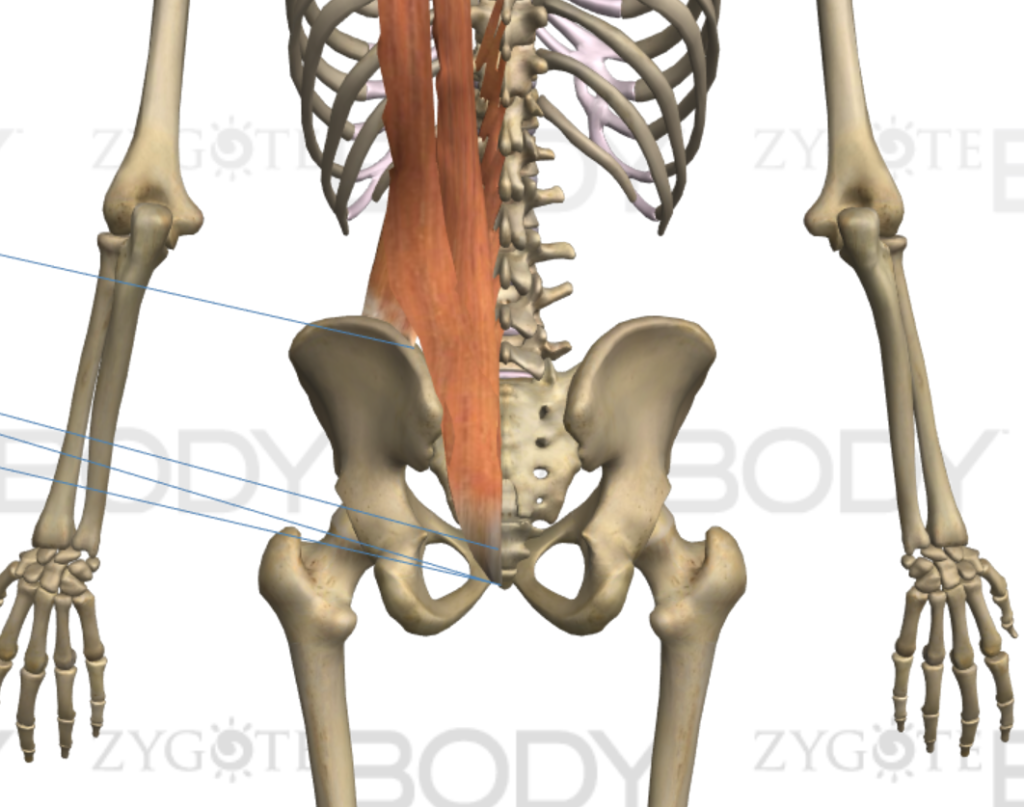
These are the main postural muscles of your lower back. Many of the poor habits and tendencies that affect the upper back also affect these muscles as well. Sitting on a bicycle seat tends to shorten the hip flexors, round the lower back, and weaken other muscles of the core. Training these muscles is important to counteract the negative effects of cycling, as well as overall lower back health and longevity.
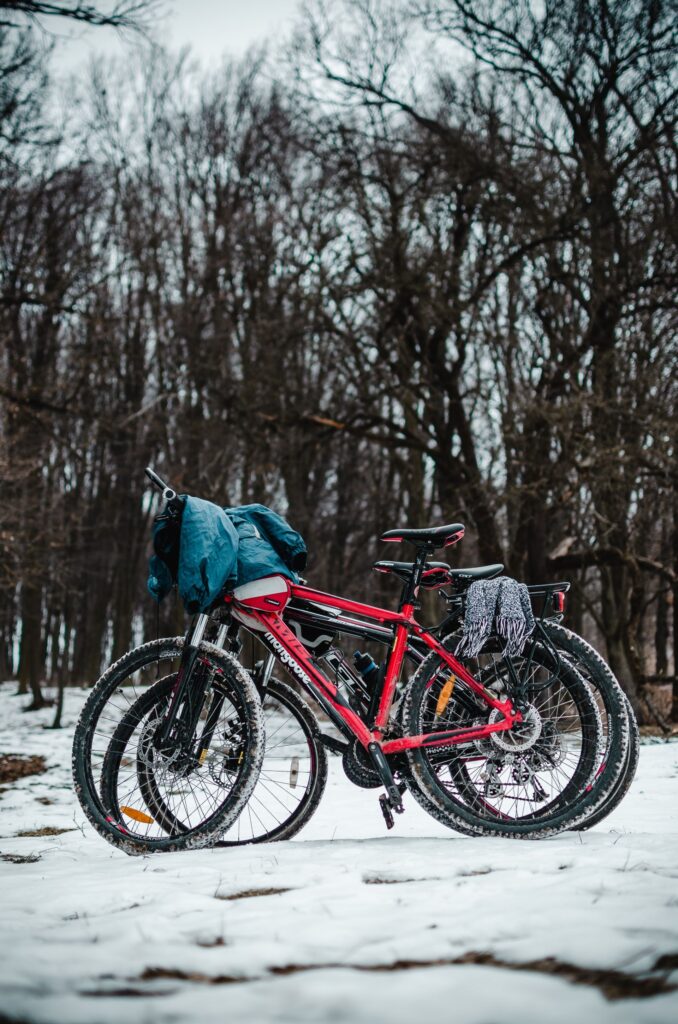
Hips:
Glutes:
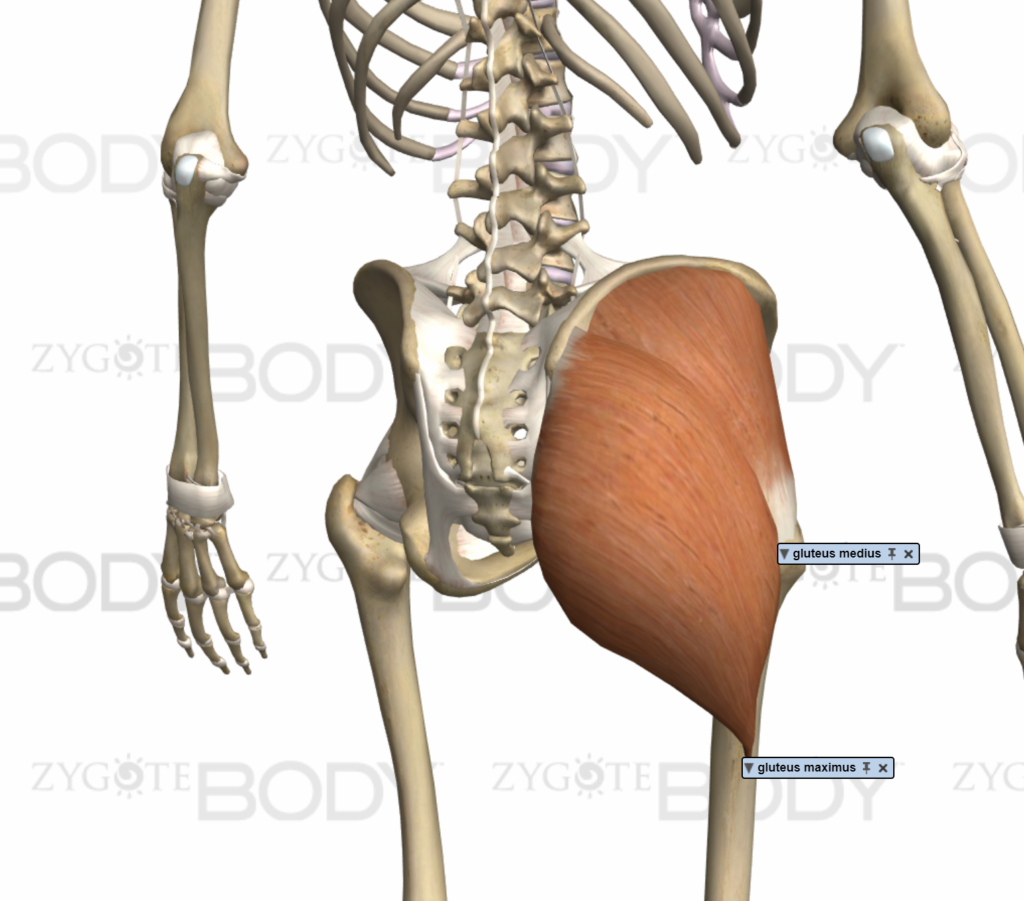
While optimally the glutes are the main muscle group driving your downstroke, they tend to become weak and inhibited when the core becomes weak and hip flexors are shortened, also from desk posture and constant sitting at work all day. It’s worth assessing the function of your glutes and determining if you are optimally utilizing them, and not compensating with the hamstrings, as this is very common. Strengthening the glutes is a key component to diminishing chronic lower back pain.
External rotators:
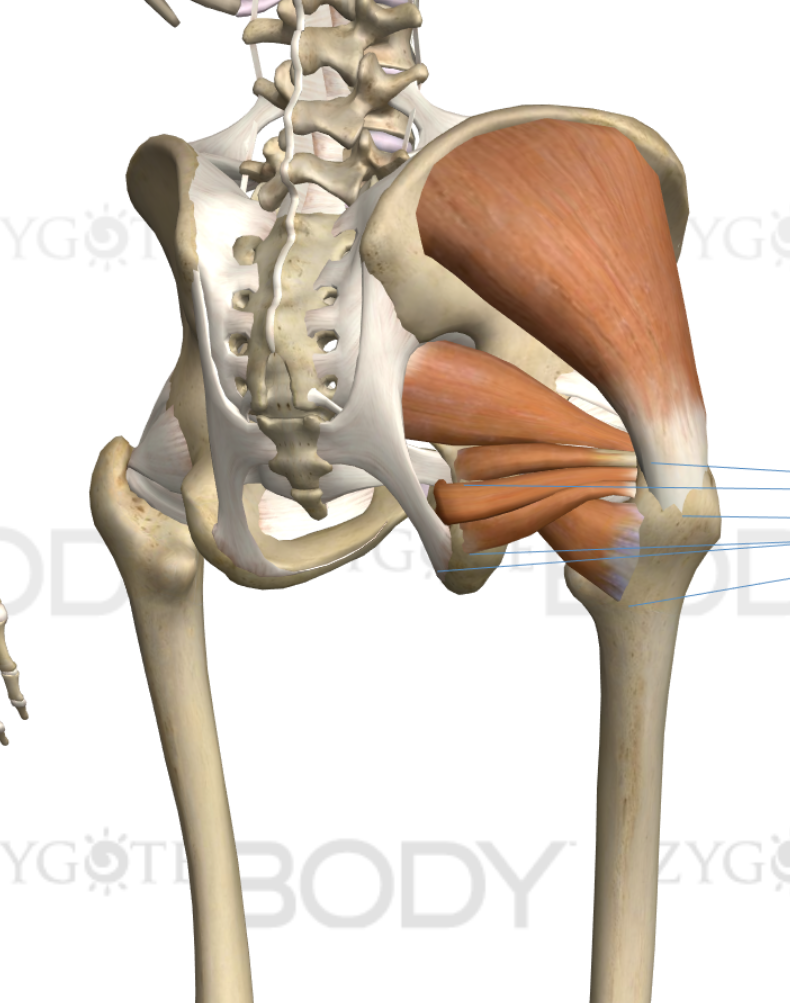
These muscles tend to become weak and inhibited from all the same reasons the glutes would (desk posture, sedentary lifestyle, etc.) and although these muscles should help stabilize the hips on a bike, they are often weak and dysfunctional. It’s worth assessing the external rotators to make sure they are balanced and functioning.

Core muscles:
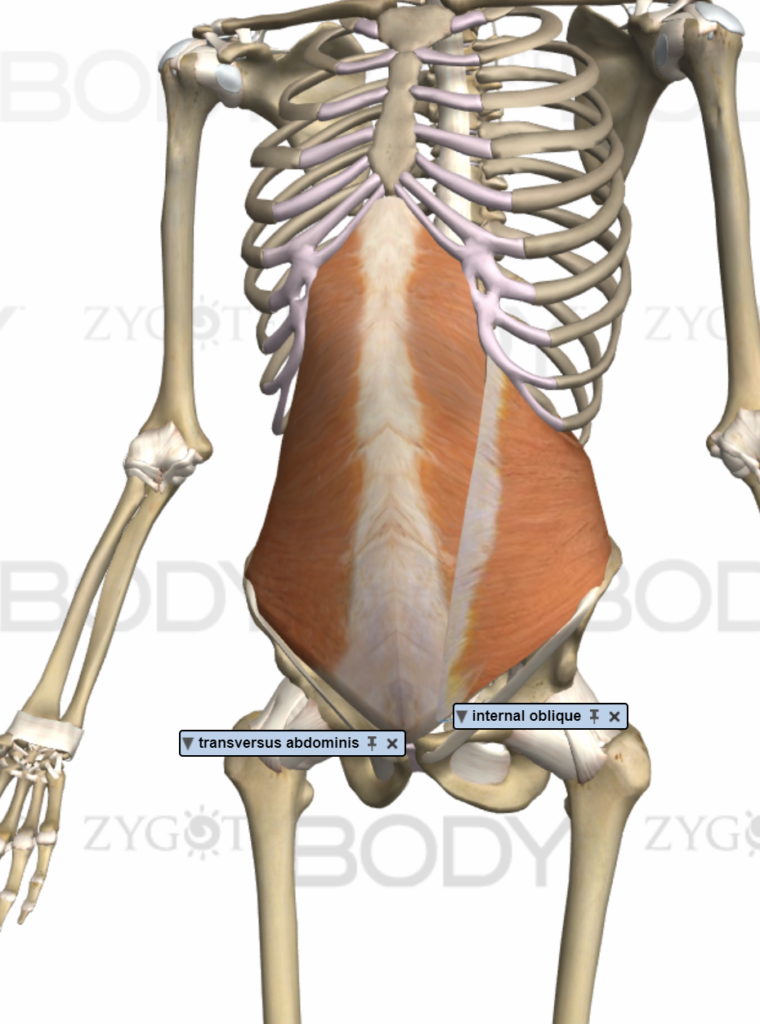
The core is a group of muscles that work together to stabilize your lower back and hips. The core plays a tremendously important role in the quality of life. Because muscle imbalances easily occur at the core, the overdeveloped muscles from biking and other lifestyle habits can cause dysfunction in this essential system. Constantly being hunched over on a bike creates a sub-optimal position for your hips and core, and can affect performance directly by inhibiting your breathing!
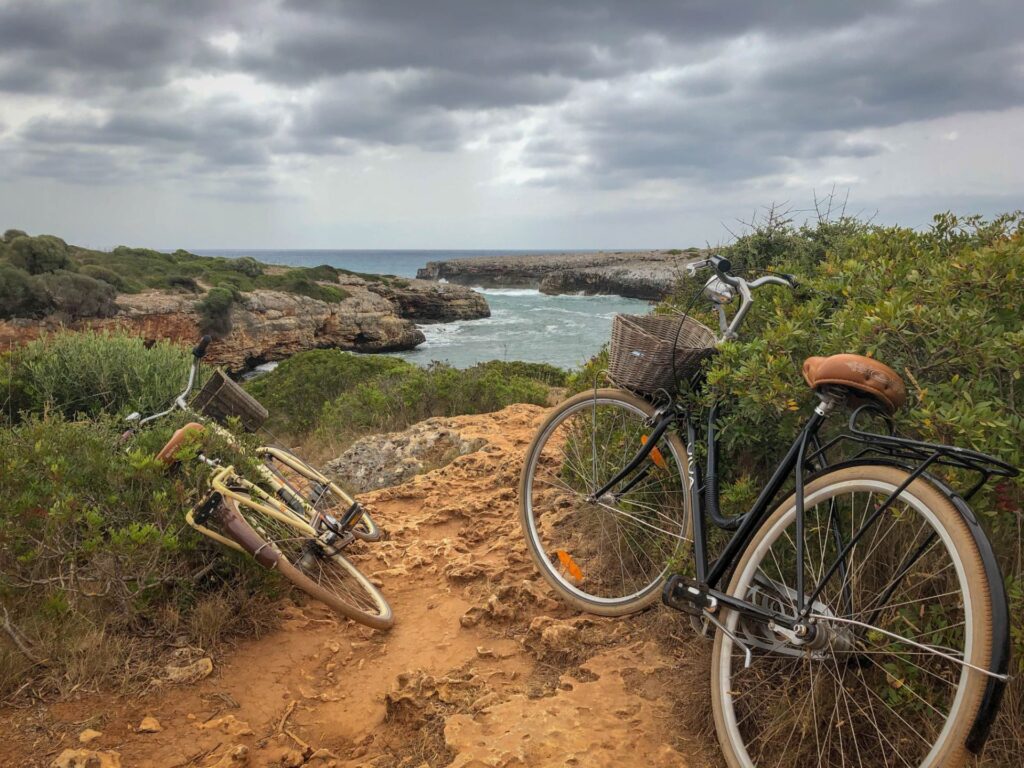
Legs:
Abductors:
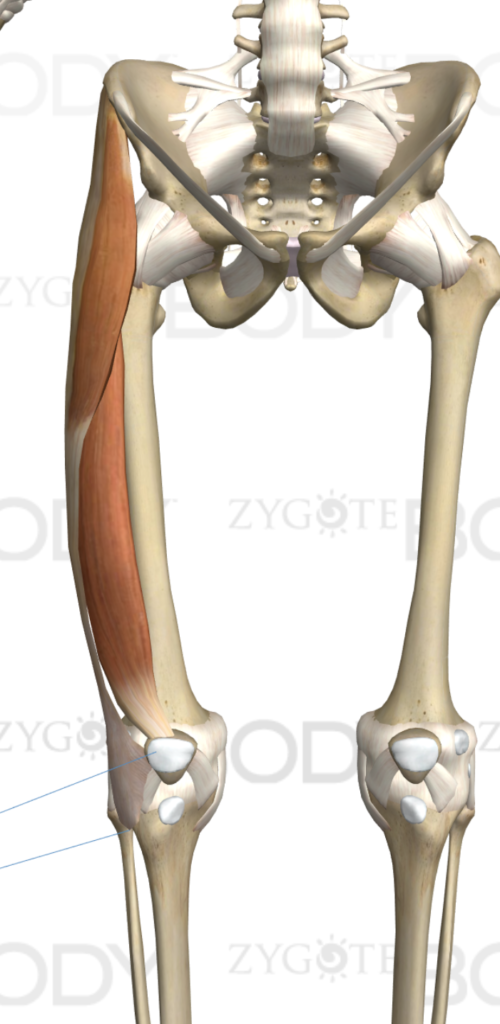
While optimally these muscles work with the external rotators to stabilize the hips on a bike, these muscles easily become weakened and inhibited from lack of use and overdeveloped antagonist muscle groups. Training these muscles along with the external rotators is important to avoid leg imbalances.
Tibialis:
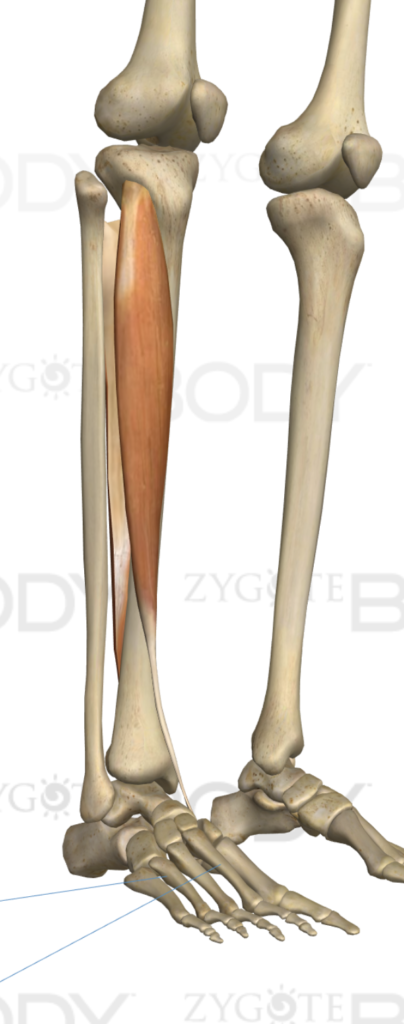
An often neglected muscle of the lower leg, this muscle assists in dorsiflexion of the foot. This muscle tends to become weak and inhibited as the calf muscles become overdeveloped and dominant. Ensuring a balance between this muscle and the calf muscles can help alleviate symptoms of ankle and foot problems such as plantar fasciitis.
Step 3: Figure out what Corrective Exercises to implement.
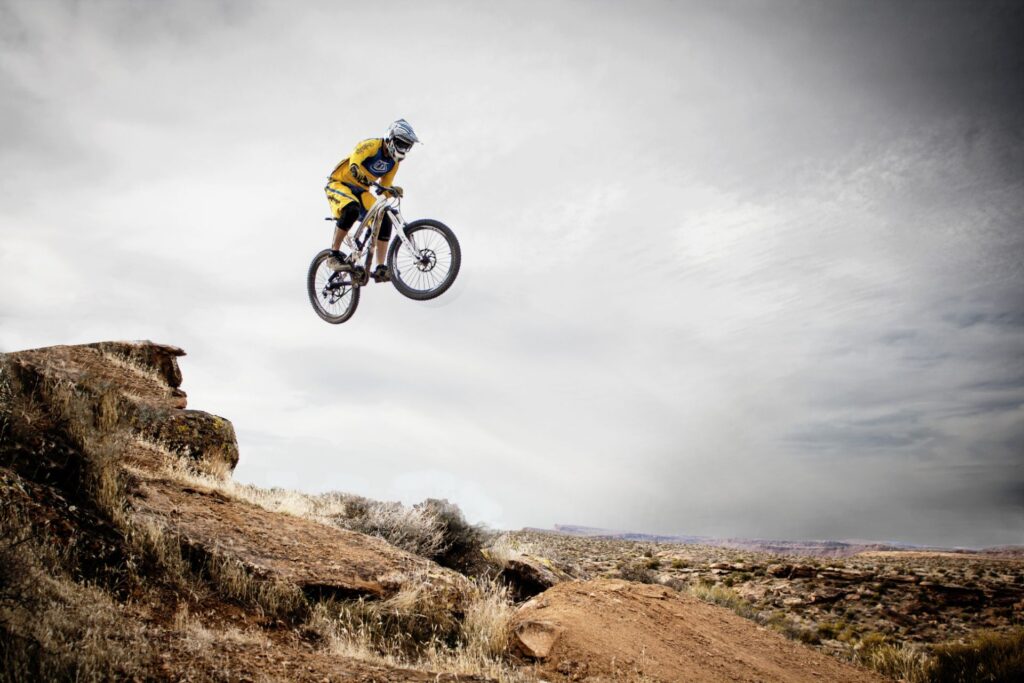
Once we have an idea of what muscles are weakened and which muscles are overdeveloped we can pick the proper Corrective Exercises to complement our hobby and reverse the damage done. Corrective exercises for bikers are most likely going to include many movements that extend and lengthen the upper back, pulling the head and should back away from a slouched position. Addressing glute weakness is KEY to mitigating low back pain. Hip extension exercises, hip hinging exercises are tremendously powerful tools to utilize.
One of the first steps towards identifying corrective exercises to utilize is to perform one or more assessments. Performing both a static and a movement assessment is a great way to identify dysfunctions that have developed and give you an idea of your personal imbalances. This makes choosing what corrective exercises to add possible.
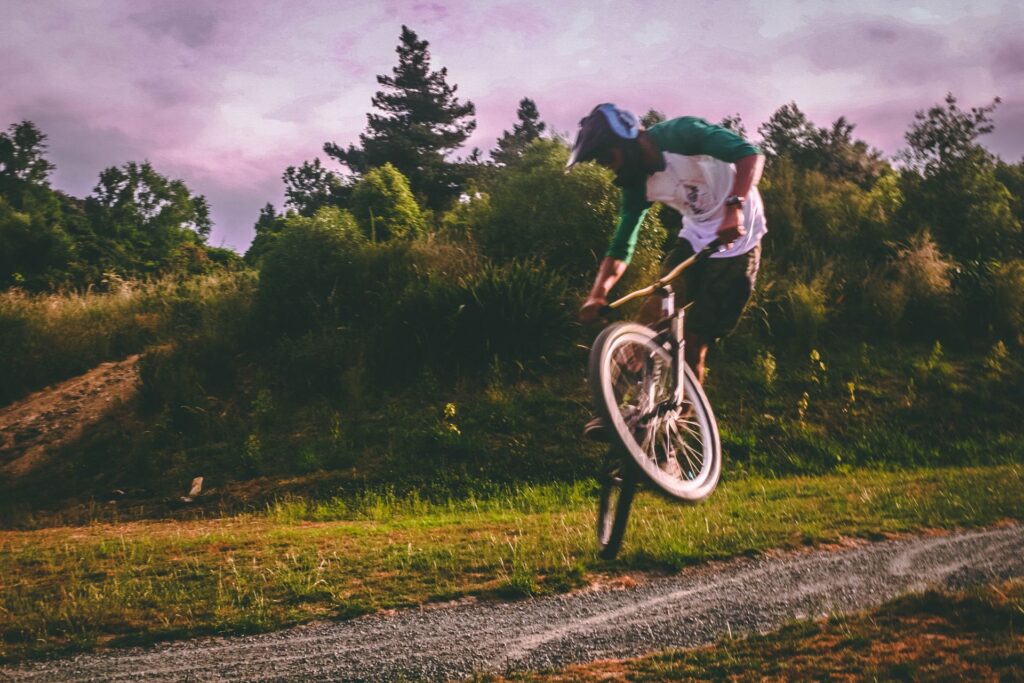
Corrective exercises should address the imbalanced weakened muscles but not take away from your main cycling training. They should allow you to get stronger at cycling by developing a well rounded muscular system that minimizes pain-related syndromes and allows you to cycle more and recover better!
As muscle imbalances begin to develop, our body will try and govern our muscle growth to prevent these imbalances from becoming too drastic. Muscle imbalances will slow overall progress and development! When you address a muscle imbalance, you will see your overall performance increase!
To learn how to perform all the corrective exercises, and what exercises can be included in your programming, check out the Corrective Exercise section of the website.
Examples of corrective exercises to implement:
As discussed above, corrective exercises will include movements to help correct posture, straightening the upper back. Strengthening the glutes and hip extension is also key. It’s also a good idea to work on the rotator cuff muscles and other muscles in the shoulder blades. Some good corrective exercises for cyclists include:
Floor prone cobra:
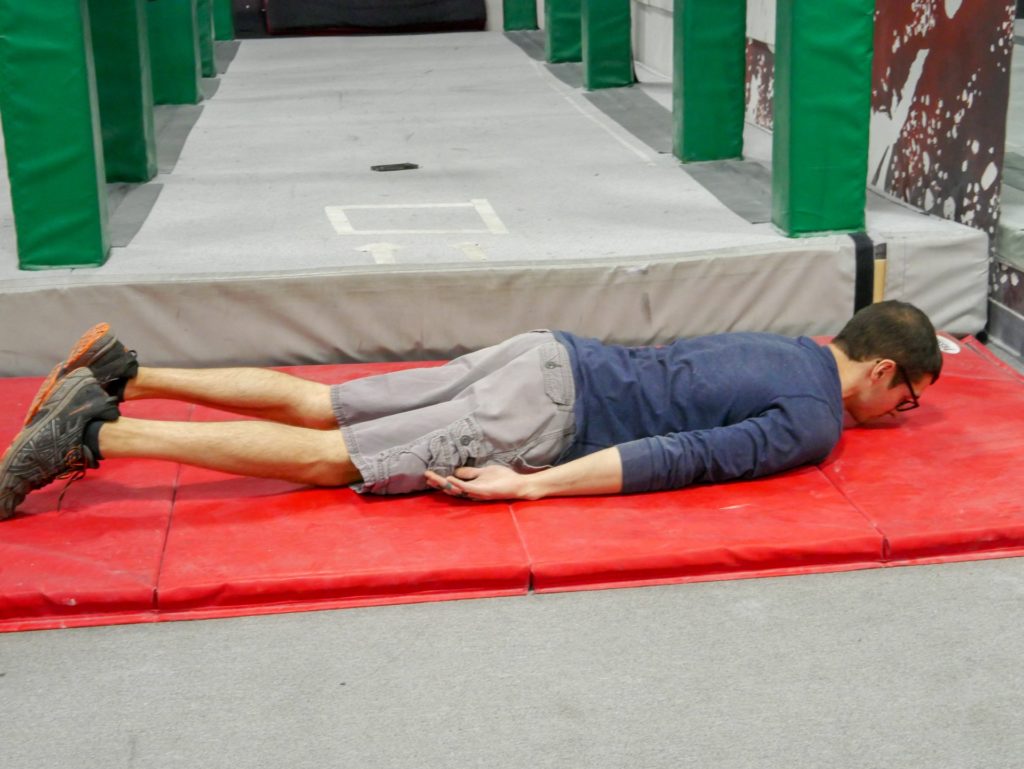
Start 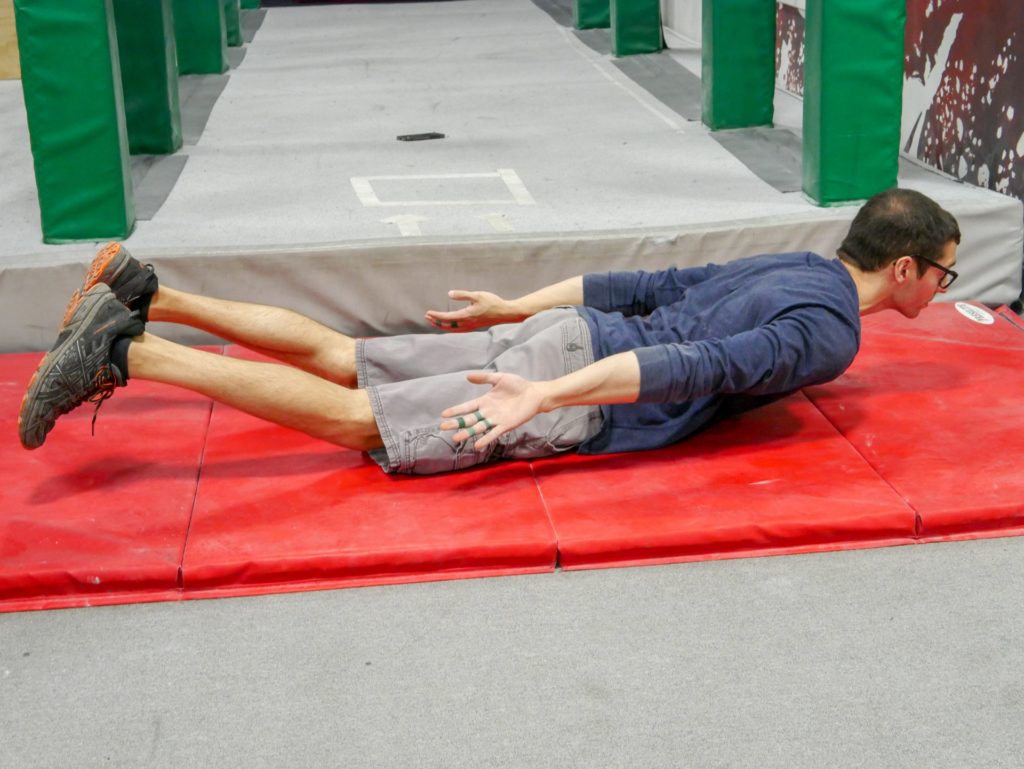
Finish
Stiff leg deadlift:
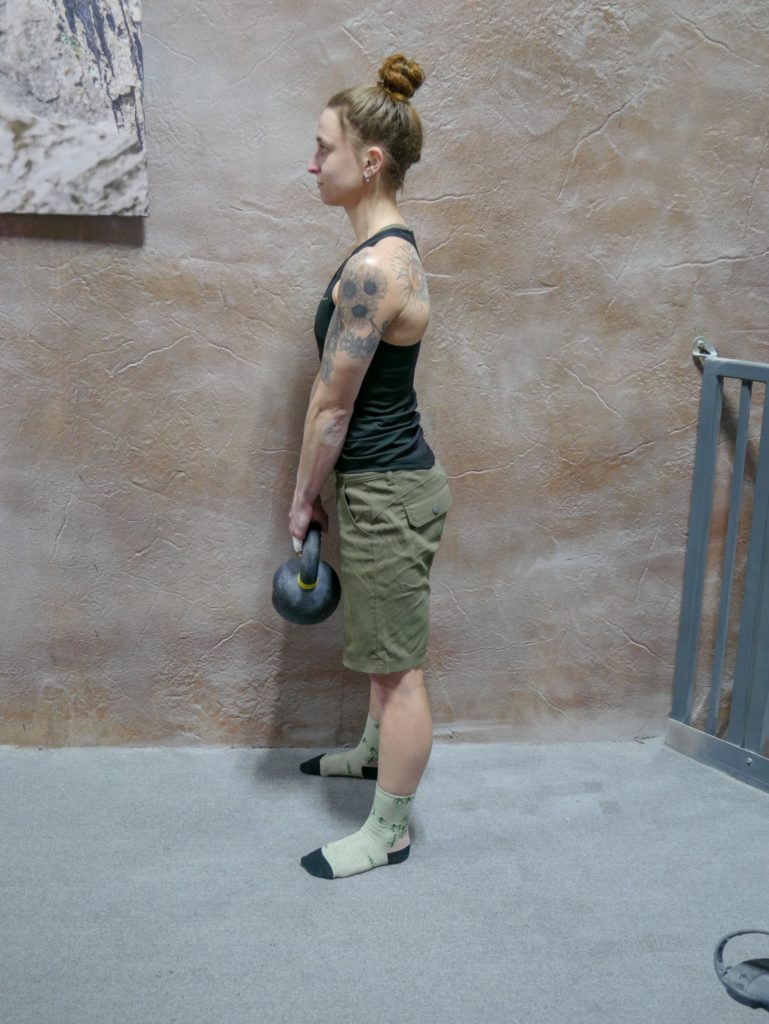
Hip hinge start 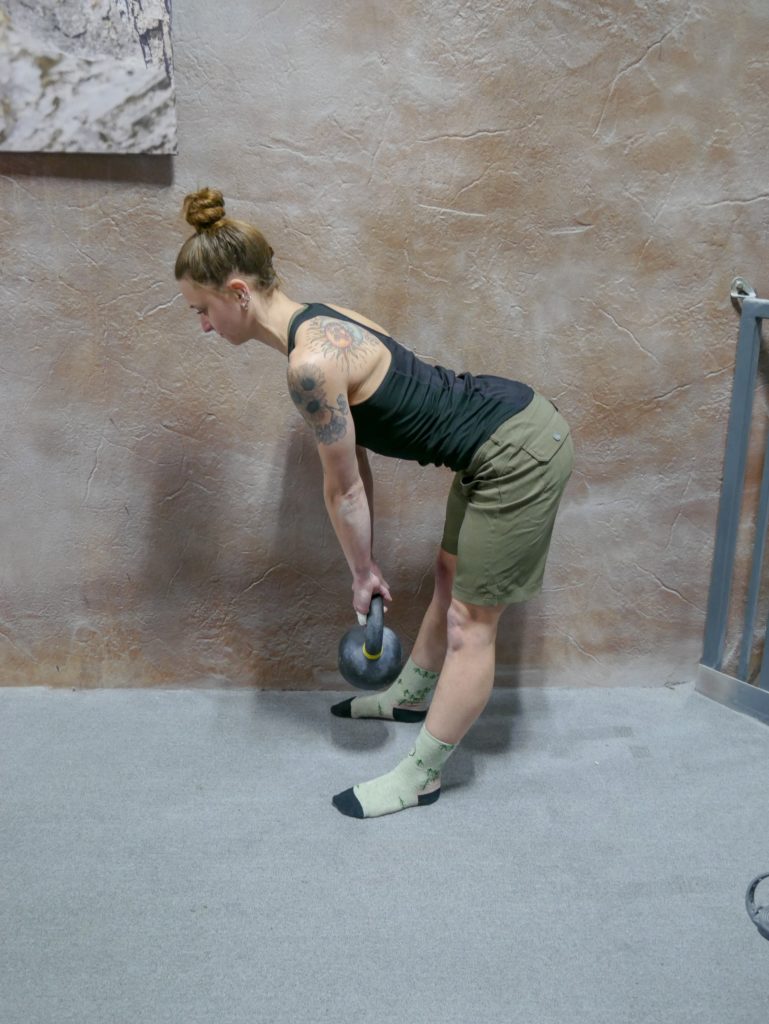
Hip hinge finish
Wall slides:
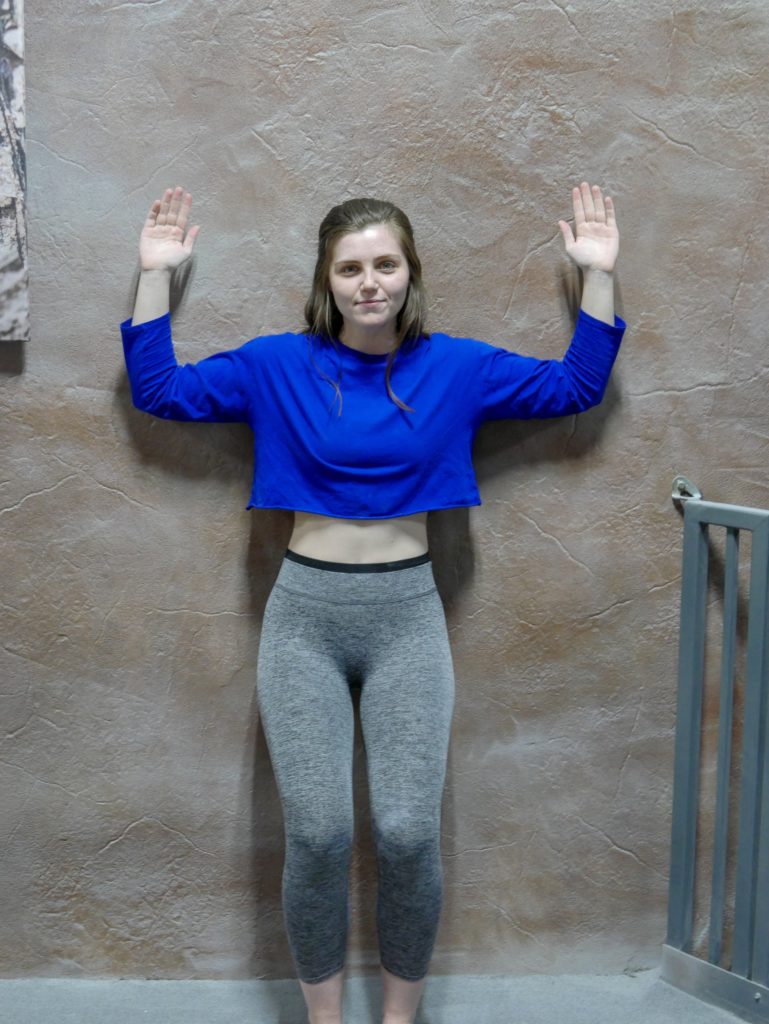
Wall slide start 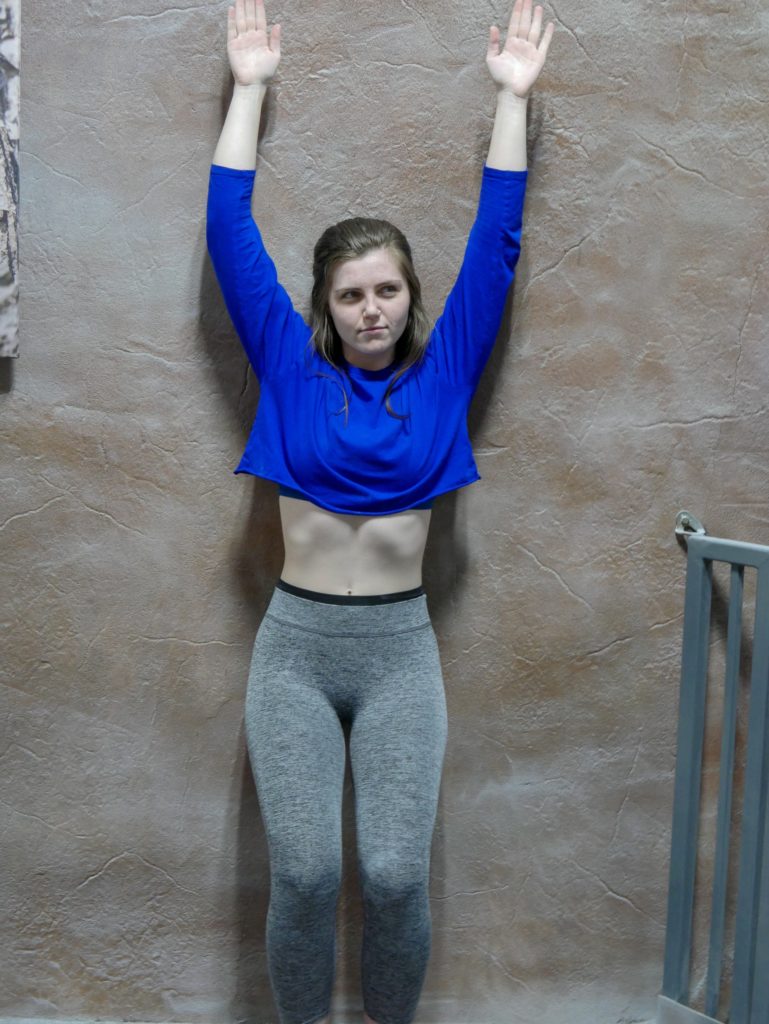
Wall slide finish
Stability ball with scaption:
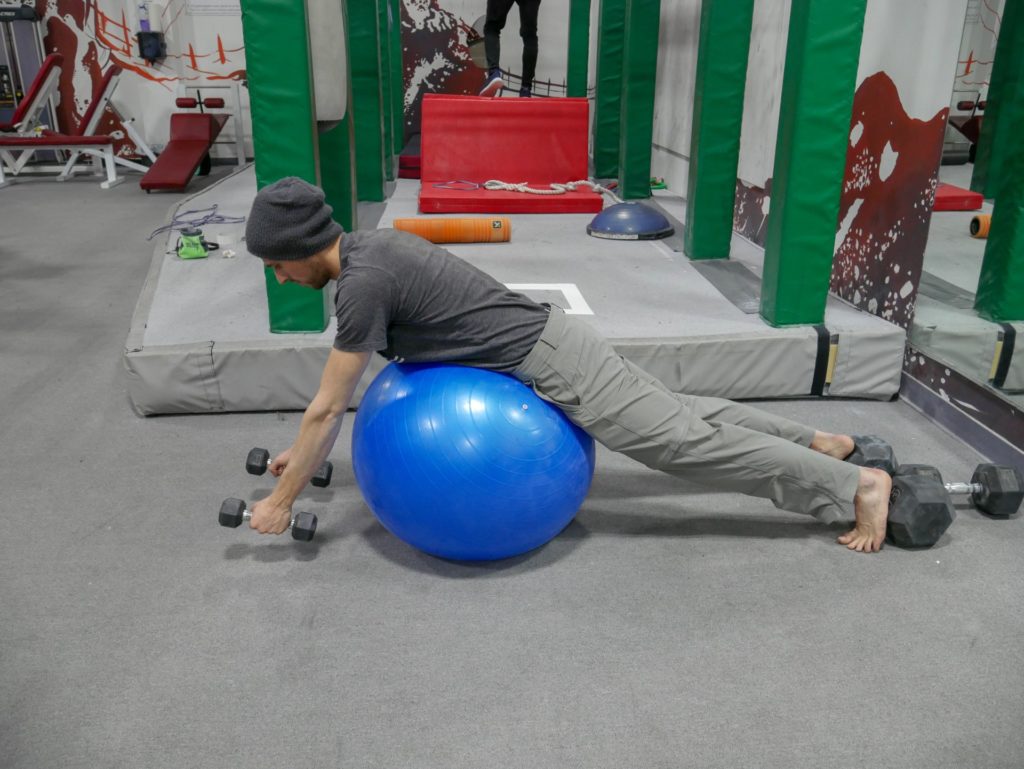
1 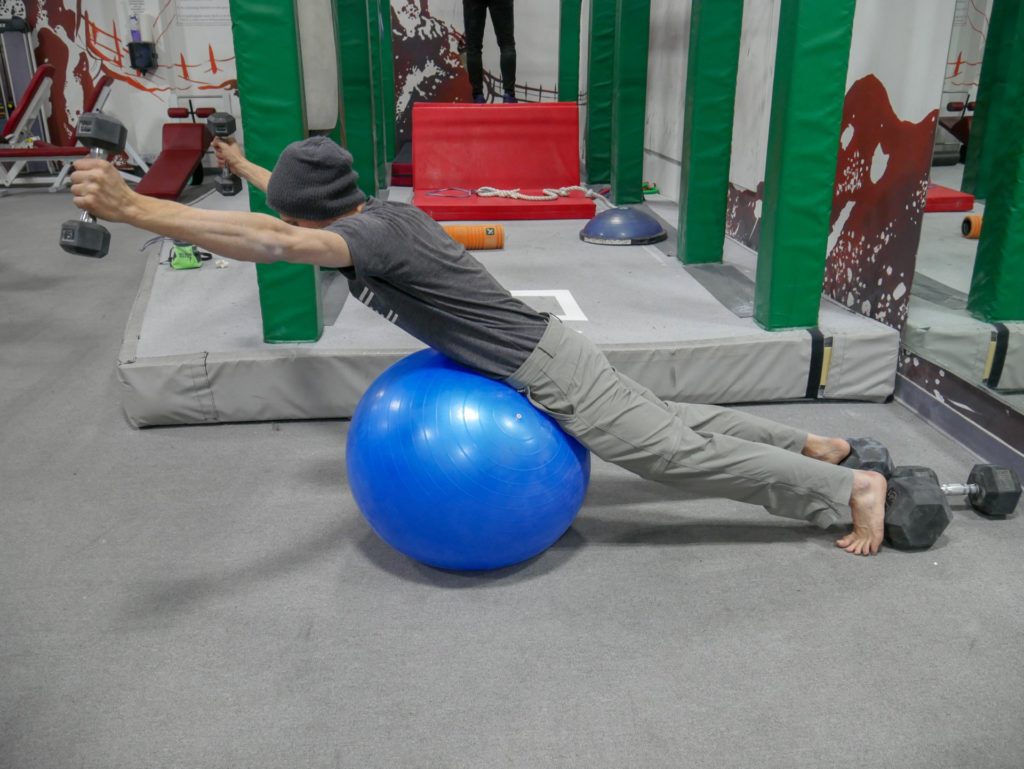
2 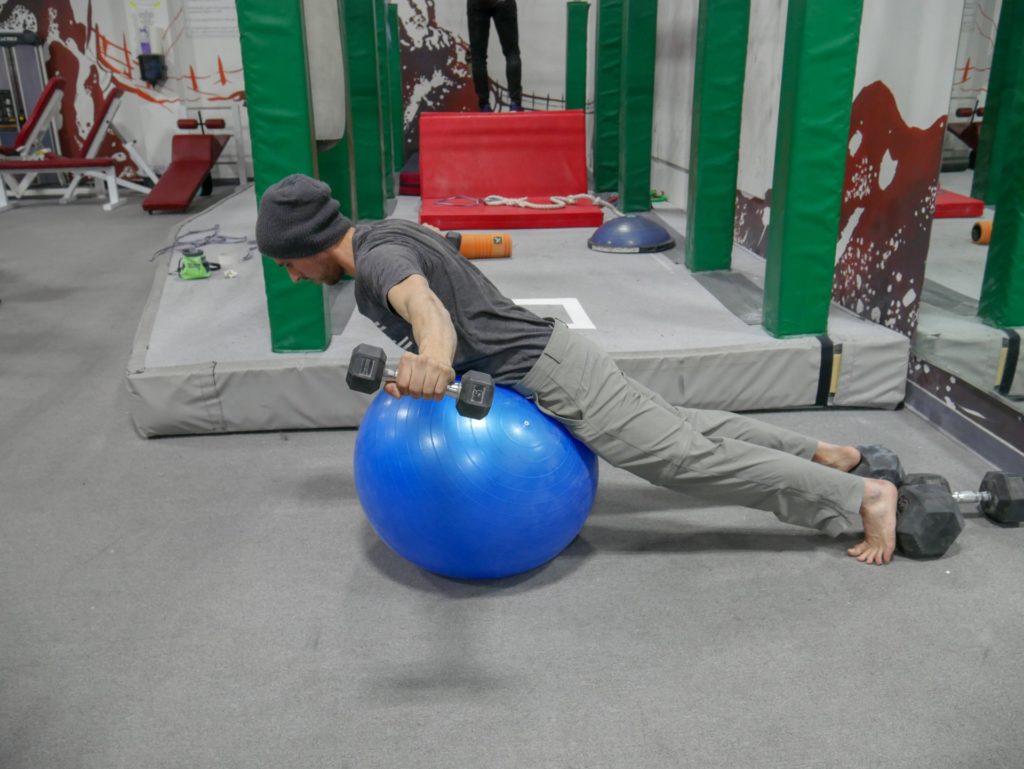
3 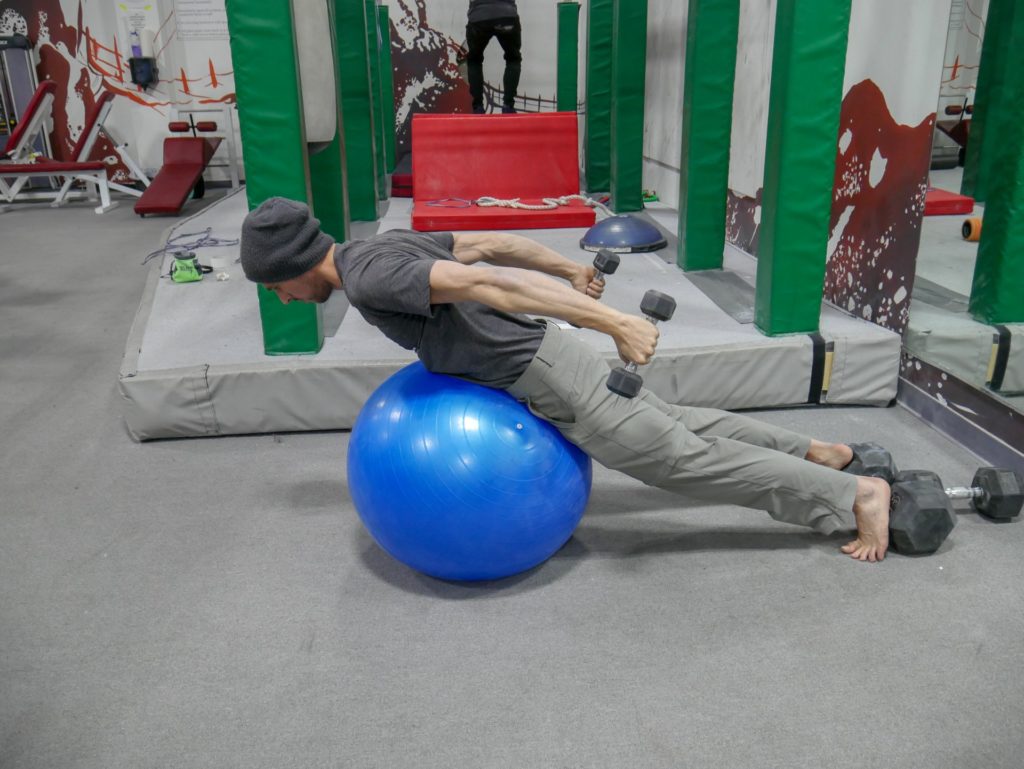
4
Glute bridges:
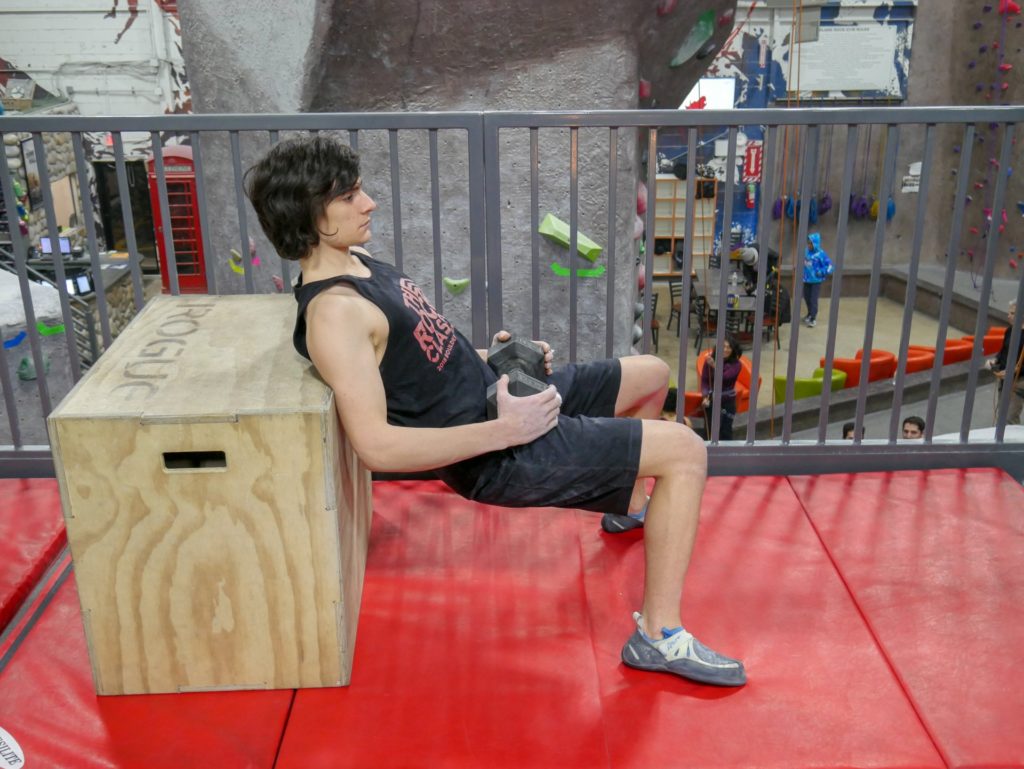
Glute bridge start 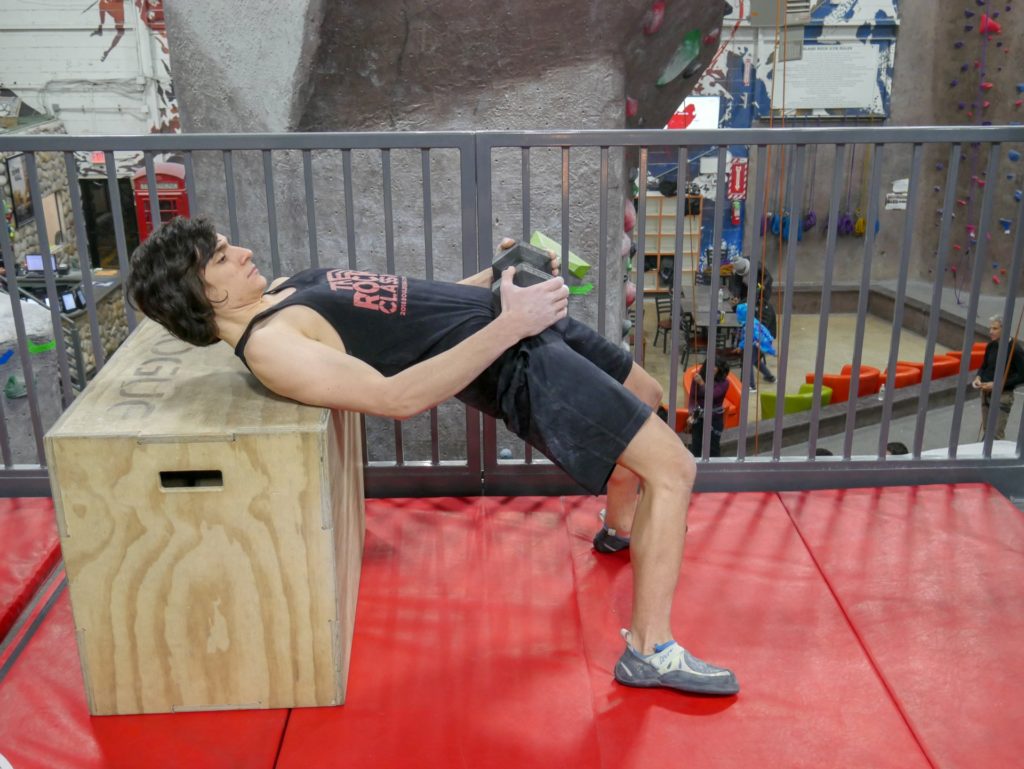
Glute bridge finish
Face pulls:
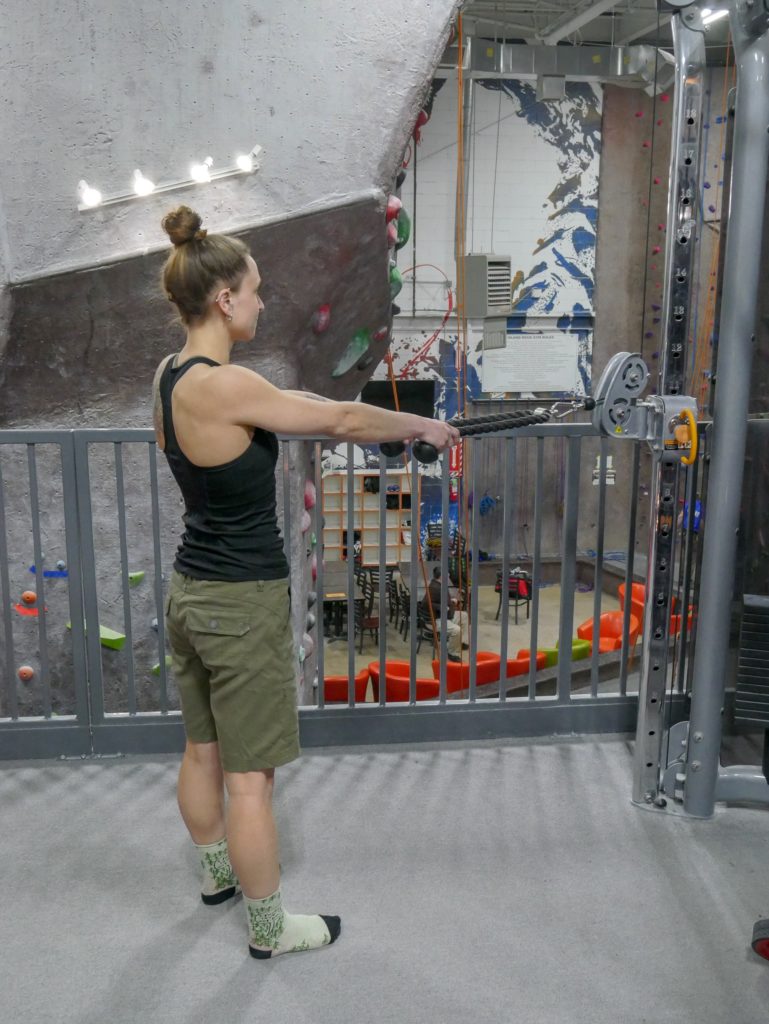
Start 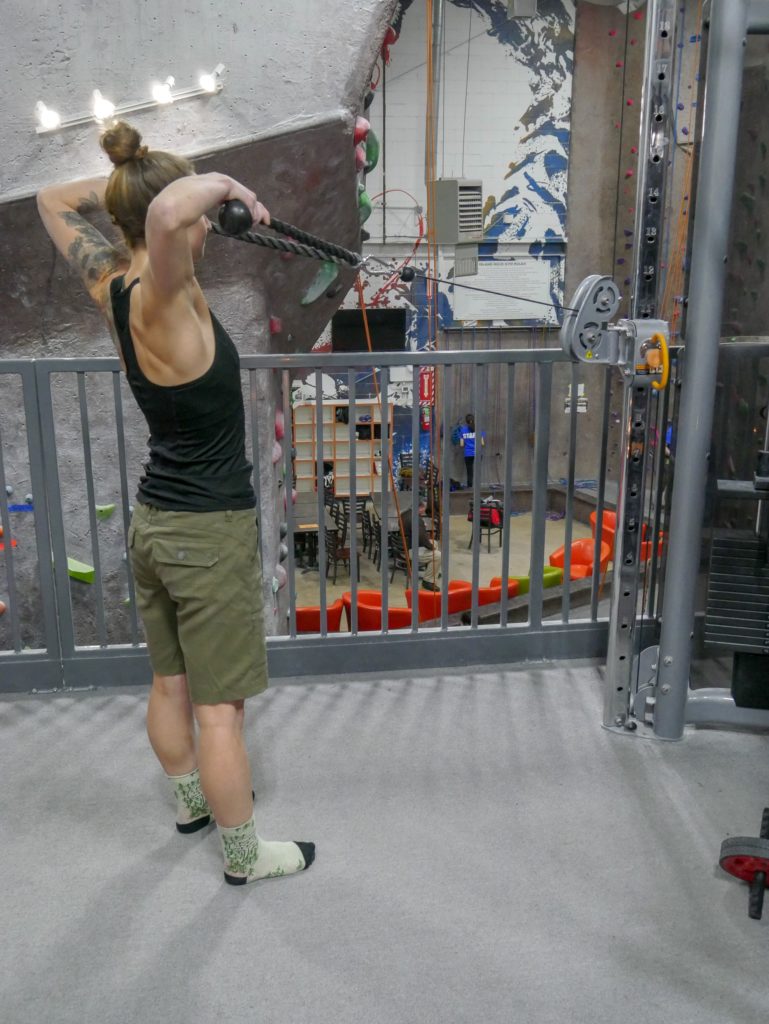
Finish
Step 4: Construct a program using corrective exercise additives.

Programming for biking should allow you to OPTIMIZE your cycling performance, not take away from it. Smashing plateaus, recovering faster, and performing more consistently without pain is the goal of a proper programming strategy. Although all forms of biking tend to lead to similar muscle imbalances, the goal of different styles of biking will alter the way you construct your exercise plan.
An exercise program should be individualized and systematic, ramping up the intensity during certain phases, and deloading and focusing on recovery during others. Planning around events and races is essential, but training should include all forms of exercise to create a balanced physique with minimal weak links. Periodization is how we change up our routine throughout the year and incorporate different styles of exercise.

It’s often a good idea to time your phase of training that best suits an event. If you think that strength and power will best help you during an event, it might be a good idea to shift your programming to align with the event. If you think that endurance is going to be most important, then aligning your stability and strength-endurance phases are key.
Different styles of biking are going to stress different energy systems. Endurance based biking like road biking and cross country cultivate a different physique through intense prolonged cardiovascular conditioning. Mountain biking, enduro racing is about tough downhill sections, explosive climbs, fast controlled cornering, and stability. BMX, dirt jumping and trials all require immense balance and sudden explosive strength to get as much air and instant stability on tiny surfaces. Because these styles of biking are all so different, we will program differently for each one.
Road Cycling/XC
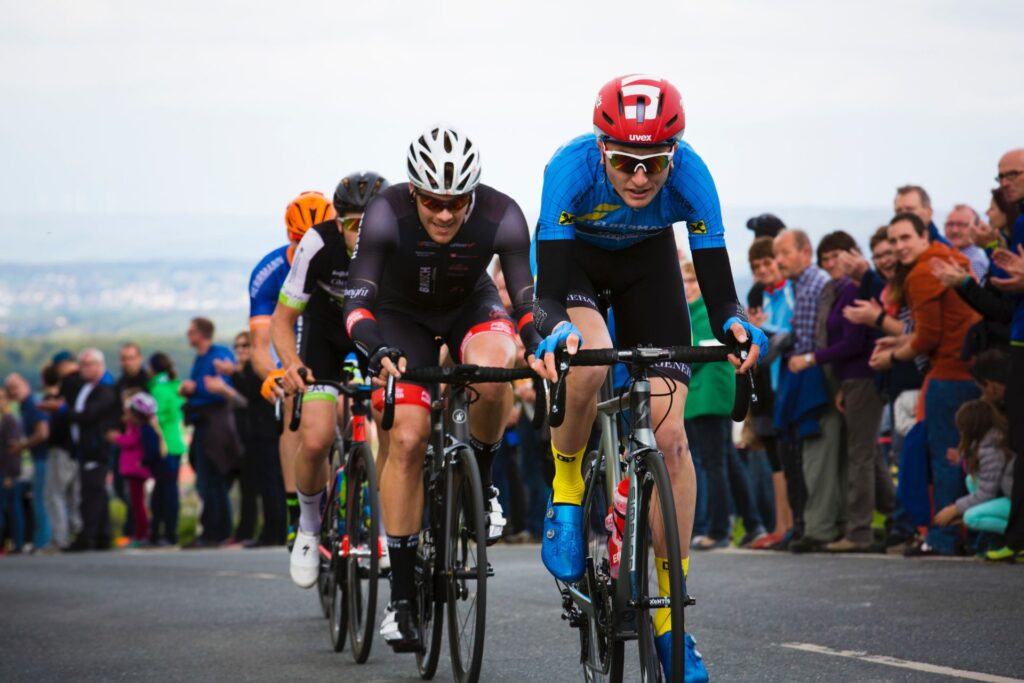
Road cycling and XC is all about endurance. Long training sessions and training frequency are to be expected. The more time we spend in these positions of stress, the more we are contributing to our muscle imbalances. When we look at a programming strategy for a road or XC cyclist we can see that most of the training throughout the year will incorporate stability and endurance-based exercises, and high frequency/volume of corrective exercise. While we occasionally include periods of strength training and power training, endurance and stability is the main focus.
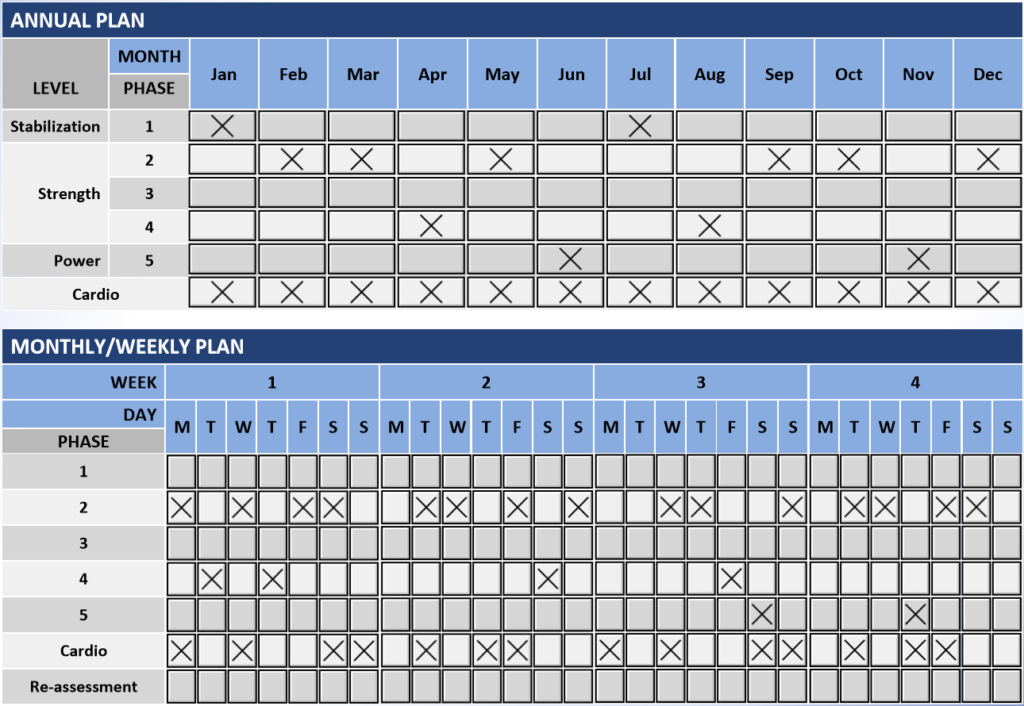
Phase one contains stability exercises with an emphasis on higher rep sets (12-15), which of course means lighter weights (50-60% of 1RM) and shorter rest periods (<60seconds). During this phase of training its most likely, you will be performing total body-oriented exercise sessions, including your particular corrective exercises. Many exercises will have a balance component like a stability ball or foam pad. Stability training is great to alternate with the strength-endurance phase as the benefits complement each other.
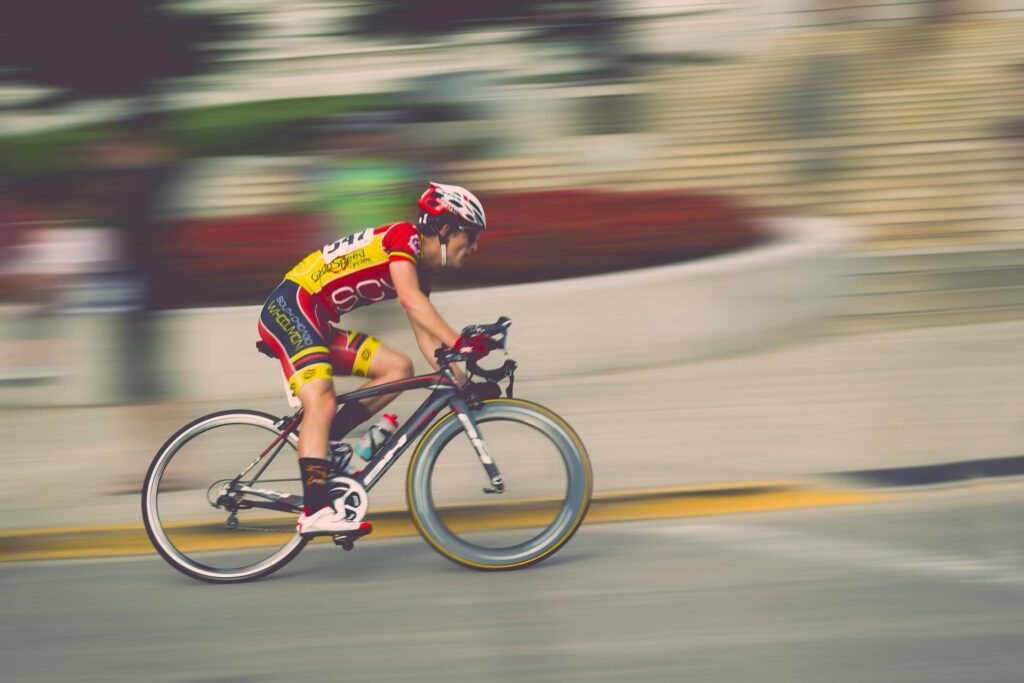
The strength phases are strength-endurance, muscle building, and maximum strength. Strength endurance will work on creating strength for longer periods of time, focusing on reps of 8-10 with moderate weight (60-70% of 1RM) and moderate rest periods (1-2 minutes). This phase of training will help to maintain speed and consistency on long climbs and straightaways without burning out. This phase, along with the stability phase is essential for outputting consistent force over long periods of time.
Muscle building phases are not nearly as important for a Road or XC cyclist, as they tend to want to remain as light as possible and maximize strength to weight ratio and endurance.
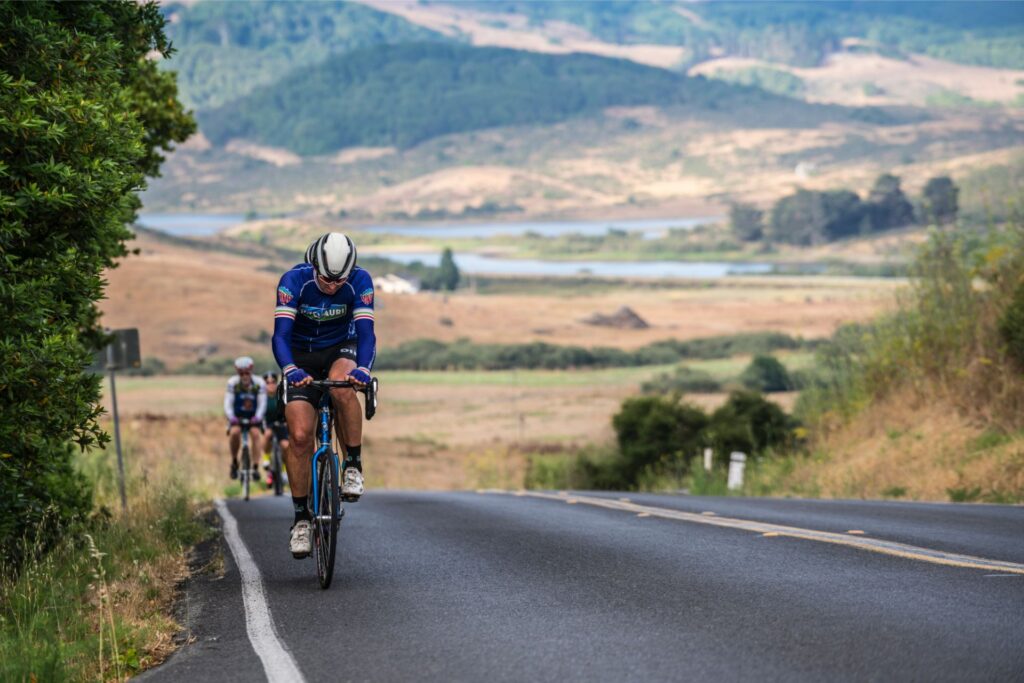
The maximum strength phase will be visited occasionally to help improve strength for short bursts of speed or short hard climbs and bike control during tight cornering. This phase of training is also great for overall bone density and conditioning. Maximum strength includes low reps (3-5), heavyweights (80-90% 1RM), long rests (5min) and explosive cadences. If you are more of a track cyclist, this phase of training is your bread and butter, but in the above example, we are more focused on long distance.
The power phase has similar benefits to the strength phase and therefore compliments it well. The training approach is different, however, and includes lightweight (<50% 1rm), high reps (12-15), short rests (45seconds) and fast explosive tempo. Power phase involves many modalities like medicine balls, slam balls, and plyometrics.
Much of the performance from Road cycling and XC comes from cardiovascular conditioning. Maximizing V02 Max is essential for getting faster and outputting that power for longer periods of time. Extensive cardiovascular training is necessary to maintain this level of V02 thresholds. Including cardio training 3 or more times a week is appropriate. Mixing forms of cardio training is a common strategy, including various cardio machines on top of regular cycling training.
Mountain Biking/Enduro
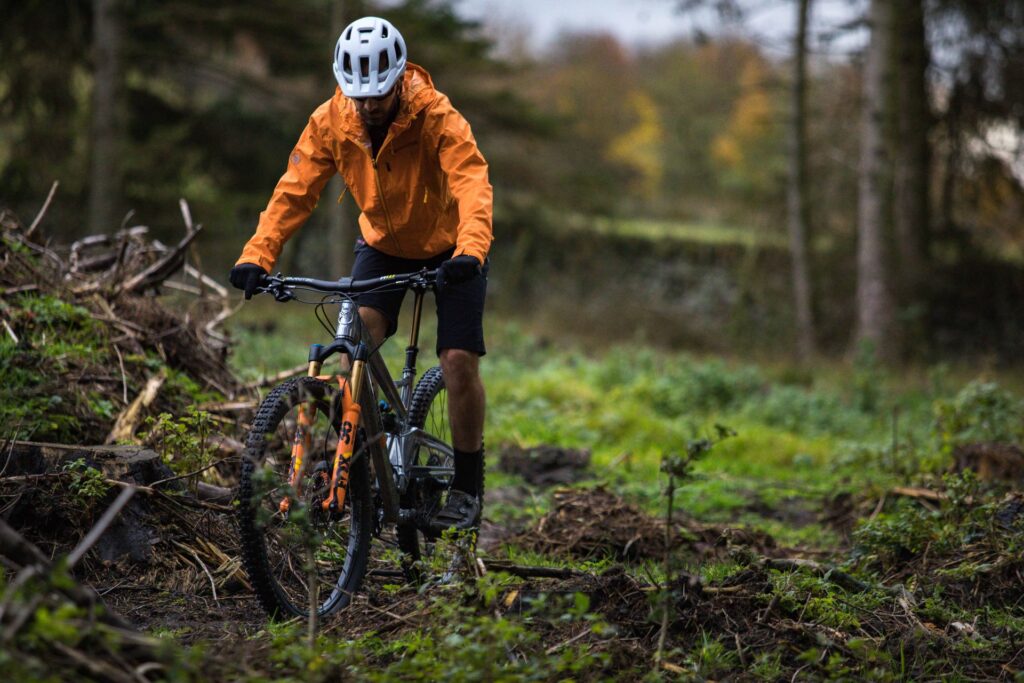
Mountain biking and enduro trails are extreme. Although often less distance than conventional road and XC trails, the difficulty and physical intensity can be extremely high. With short intense climbs often over obstacles, and steep drop-offs, jumps and chunky descents, it’s important to be constantly focused and strong enough to control your bike and maintain form. Considering all forms of biking tend to develop similar muscle imbalances and dysfunctional patterns, corrective exercises should be built into programming in a similar fashion. Mountain bikers should be spending much of their time in the Strength endurance phases, maximum strength, and power phases.

Phase one contains stability and balance exercises. Alot of mountain biking does require balance and coordination so visiting this phase of training makes sense. It’s a great way to ramp up into other forms of training, or deload from more intense forms of training. Stability training includes total body style exercises, often with a balance component like a stability ball or foam pad. Higher rep sets (12-15), lighter weights (50-60% of 1RM) and shorter rests (1min) are all criteria for this phase of training.
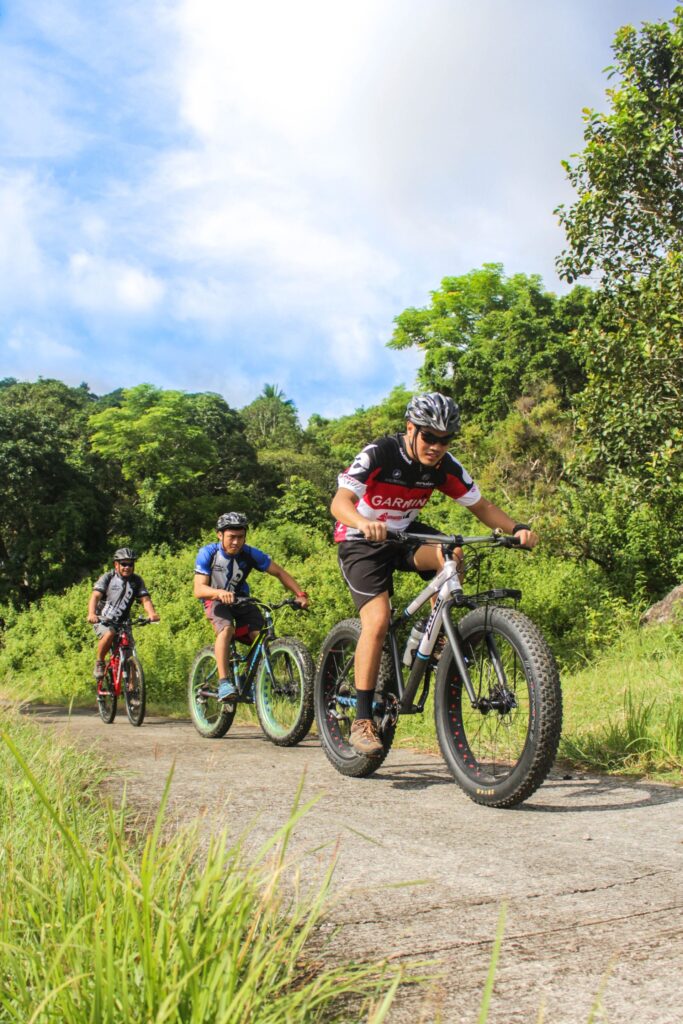
Strength-endurance is a key phase of training for a mountain biker. This phase of training will allow you to perform for an appropriate amount of time you might expect to be on a single track or downhill course. Strength endurance will allow you to remain consistent, staying fast and in control throughout the whole trail, but able to really crank down for tough climbs and rocky descents. This style of training will create the right amount of versatile strength for what this style of cycling requires. Strength endurance contains moderate reps (8-10), moderate weight (60-70% of 1RM), and moderate rest periods (1-2min).
Much like road and XC programming, the muscle-building phase isn’t as beneficial to any kind of cyclist. Maximizing lean body mass and strength to weight ratio is what any cyclist wants.

Maximum strength is an important phase for a mountain biker. This will ensure that you can power through many tough sections with unfavorable conditions, mud, sand, steep climbs, rock cornering where you need to be very controlled with your bike and strong in the arms and legs. Maximum strength will improve your overall speed and acceleration. Maximum strength includes low rep sets (3-5), heavyweight (80-90% of 1RM), and long rests (5min). Exercises should be performed explosively.
Power training is of similar importance to a mountain biker and will complement the benefits of maximum strength. Power training will help with agility, make you more nimble and more in control when getting up out of the saddle. It will help you accelerate faster. Power training is performed explosively with modalities like a medicine ball, slam ball, and includes much plyometrics for quick explosive strength. Maximum power is performed with lightweight (<50% of 1RM), high reps (12-15), and short rest (45sec).
BMX/Dirt jumping/Trials
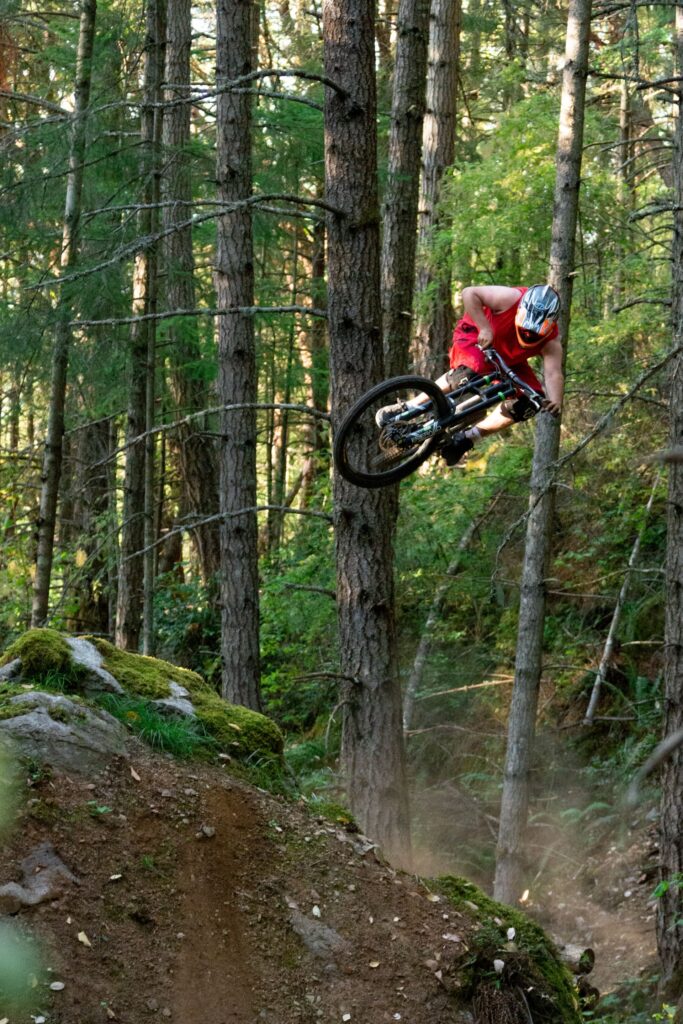
BMX, dirt jumping and trials all involve extreme bike control often from stationary positions, or in tight spaces between ramps, jumps, pump tracks, and street features. This style of biking is very unique, and a BMX or trial biker can greatly benefit from maximum strength and leg power for explosive force and massive hops.
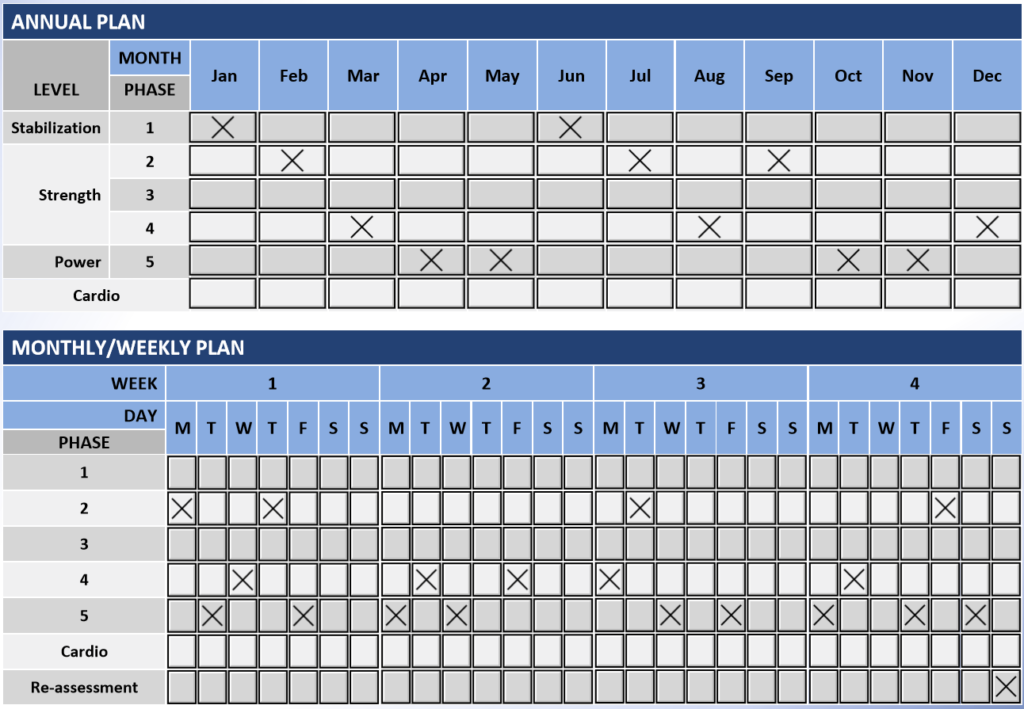
A BMX or trials biker will spend limited time in the stability phase of training, which includes light weights (50-60% of 1RM), higher rep sets (12-15) and shorter rests (1min). This phase serves multiple benefits, as it utilizes balance modalities like foam pads and stability balls. This phase is helpful for training balance which can translate to track stands and skinny features, and also as a deload and ramp-up into more intense phases of training.
Strength-endurance isn’t nearly as useful for a BMX or trials rider but can be visited as a segway into other phases of training. This is useful for overall conditioning, especially if the rider is out of shape or just beginning exercise. Strength-endurance contains moderate weights (60-70% of 1RM), moderate reps (8-10), and moderate rest times (1-2 min).
Maximum strength is very effective for a BMX and trials cyclist. This is where a biker will develop the strength required to launch yourself from a standstill, bunny hop higher, generate force from small surfaces, propelling you up ramps, etc. Maximum strength consists of heavyweights (80-90% of 1RM), low reps (3-5), and long rests (5min). This phase is great to alternate with power training.
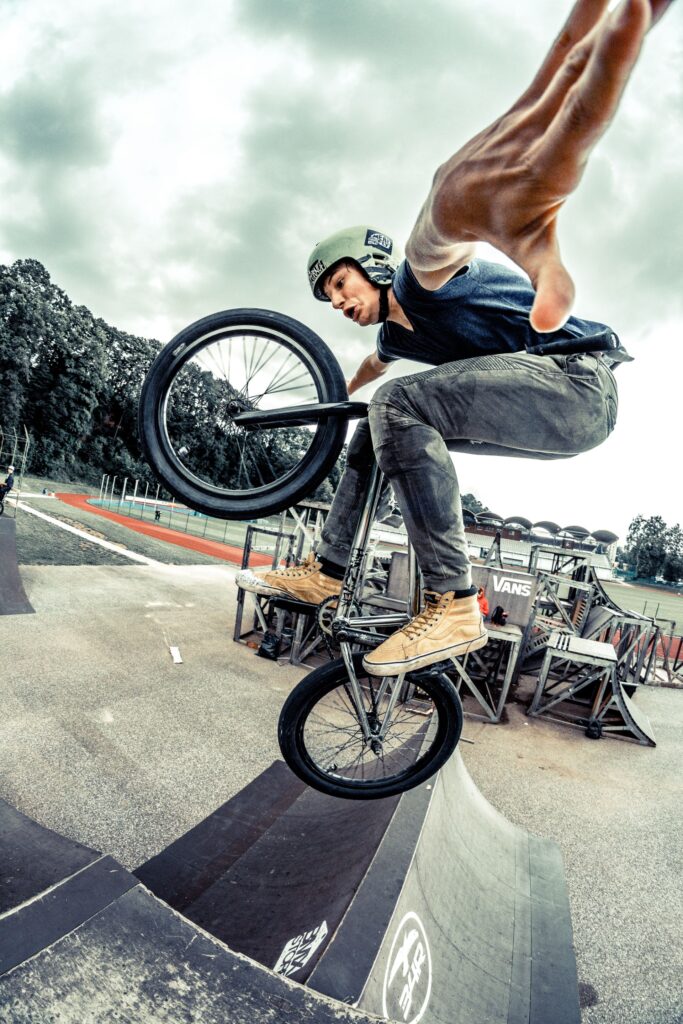
Power training is very useful for a BMX and trials athlete. Power training will develop explosive force, which will move you faster, accelerate you quickly, increase the speed and explosive ability of your tricks and maneuvers. Power training has very similar benefits to maximum strength training but is performed much differently. Power training consists of light weights (<50% of 1RM), high reps (12-15), and short rests (45 sec).
Step 5: Reassess regularly. Maintain.
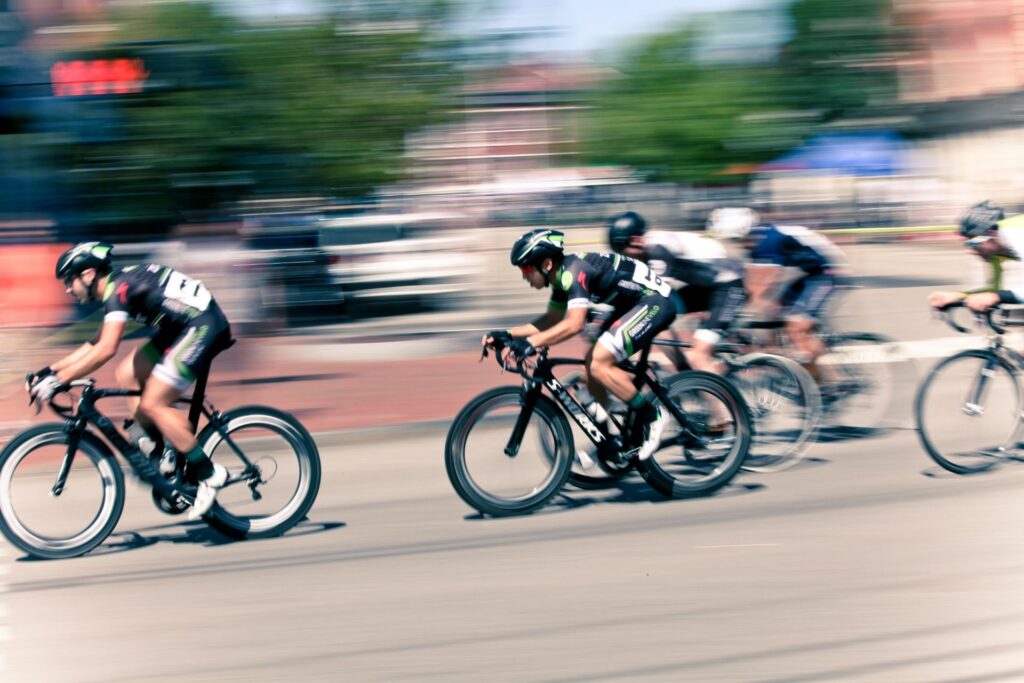
Because muscle imbalances and dysfunctions are a dynamic process, meaning they are always changing. Exercising will begin to resolve and alter these imbalances and it’s important to stay on track. It’s possible to over-correct imbalances, or create new imbalances. Performing an assessment regularly is key to maintaining performance and pain-free activity.
A static assessment and a movement assessment is a great way to gauge where you are at and how things are progressing. Monitoring your progress is a good idea, keeping track of the time it takes you to complete trails and perceived exertion. Corrective exercise and proper programming should increase your athleticism and improve your skills, not deteriorate your energy and progress.
A cardiovascular assessment is a great way to gauge your aerobic capacity and threshold for endurance exercise. It’s important to reassess regularly to make sure you aren’t plateauing and to ensure you aren’t overtraining. Managing cycling-specific training and corrective exercise is balance.
Corrective exercise and resolving muscle imbalances should decrease pain and issues related to injuries and syndromes. Tendinitis, knee pain, ankle problems, hamstring cramps, etc. should decrease in occurrence. If these issues continue, you should seek professional help.
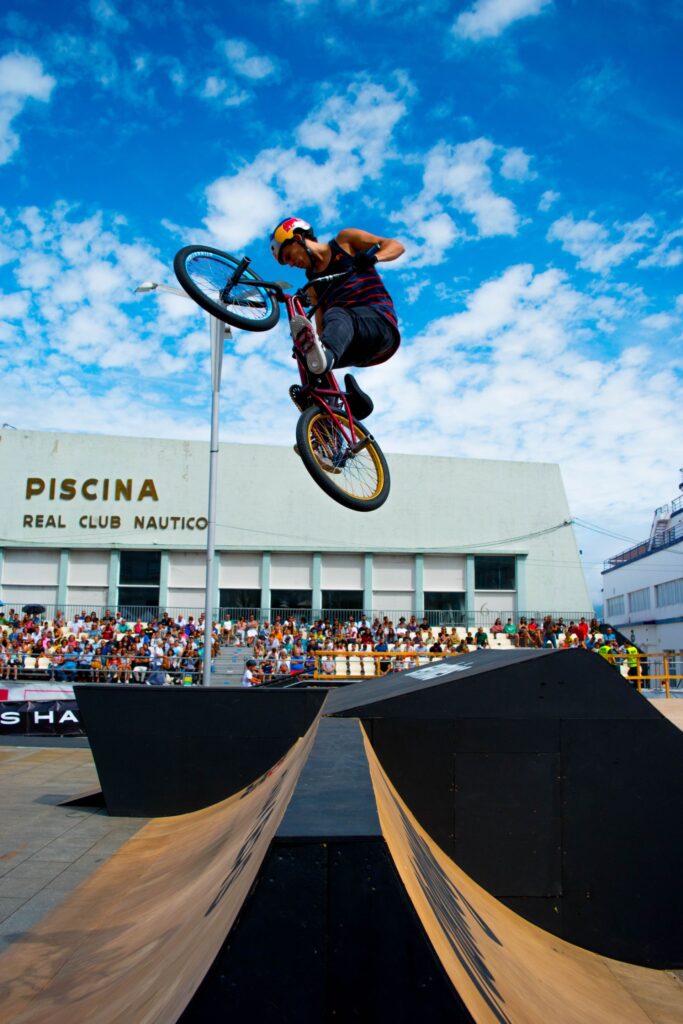
As issues improve, it might be appropriate to discontinue certain corrective exercises or reduce the volume to a maintenance level. Biking will continue to overdevelop the same muscle groups so it makes sense to continue to incorporate corrective exercises for the opposing muscle groups.
Programming should be fluid, and change according to the needs of the athlete. Your programming should not be set in stone and should adapt to what makes the most sense for where you are at and what your goals are. As your goals change, and your imbalances change, your programming needs to reflect that.



